Dieser Artikel ist auch auf Deutsch verfügbar. Click here to find out more about China!
The first ten days of my mini trip around the world have passed, and it’s time to post something again 🙂 My first stop to was Beijing, the capital of China.
Immigration
China wasn’t actually part of my plan, since I didn’t want to go through the hassle and cost of getting an actual visa for the country. But direct flights to Seoul were quite expensive, and it seemed that it would be cheaper to fly via Beijing. Since 2013 it’s possible to apply for a “Temporary Entry Permit” for up to 72 hours when transiting at Beijing Capital Airport, and I decided to give it a try and do Beijing as a “fly-by”.
These are the rules for the Temporary Entry Permit:
- You have to be a citizen of one of the 53 allowed countries.
- The scheduled departure time of the outbound flight has to be less than 72 hours after the scheduled arrival time of the inbound flight. The 72 hours used to be counted starting from midnight of the following day, this is no longer the case.
- The outbound flight is not allowed to go back to the same country the inbound flight started in.
- You’re not allowed to leave the city limits of Beijing, the Temporary Entry Permit is not a visa! The city of Beijing is about half as big as Belgium, so you can visit various pieces of the Chinese Wall, but not the Yangtsekiang.
- If you arrive at Shanghai, Nanjing or Hanghzou you can apply for a Temporary Entry Permit for up to 144 hours, and you’re allowed to travel between these cities (e.g. by high-speed train).
There seem to have been some difficulties at the start, airlines have to check that passengers have a valid visa for China during check-in and not everybody knew about the Temporary Entry Permit. It went like this for me: the lady at the counter in Frankfurt entered the date and time of my planned outbound flight into the booking system and I boarded the flight.
At the airport in Beijing I had to fill out a special form at a special counter before the actual immigration counters and had to show the booking for my outbound flight. A “Temporary Entry Permit” with the planned exit date was stamped into my passport, the lady typed something into her computer, and then I went through immigration and passport control as usual.
That was it, and on I went to the city with the Airport Express.
A first taste of the Smog, and an outlet of a well-known Swedish furniture store chain at the horizon 😉
The Beijing Metro isn’t really different from any other Metro in any other big city. There are many lines, but the city is very big and the stops are often far from each other, so you should plan ahead. Most stops have more than one entrance and exit. They are labeled with letters and it helps a lot if you know the right exit beforehand, but always check your info. My hotel for example told me to get out at exit C, but exit D would have been just as far from the hotel but much easier to reach.
If you have bags or bagpacks, you have to go through an additional X-ray screening. Every Metro stop is pretty much like the security area at an airport. I had already seen that in Russia, but the Chinese X-ray checks are much faster. Try to avoid rush hours, the queues in front of the machines can get long, especially when migrant laborers bring their whole househould in huge bags.
The ticket system was quite confusing. You have to pay three or more Yuan (about 40 Euro-Cent or more) depending on the distance you want to travel. As a short-time tourist I used single-use tickets, which was an annoying experience. The ticket vending machines were often broken, the turnstiles often didn’t recognize the cards, and the tickets were only valid on the day of issue.
First impressions
The temperature was at 31 degrees Celsius when I arrived in the city. Smog wasn’t half as bad as expected, probably due to the many electric bikes and vehicles. Allegedly you still need a drivers license for a gas-powered bike, but you don’t need one if it is powered by electricity, and many citizens exploit this. Tricycles working at construction sites were also often powered by batteries, and the city busses either seemed to be trolley busses or hybrids (Diesel/Trolley combination).
Standing at some roads you could often only hear the whirring of the electric engines for a while, even though the streets were under heavy use 😯
New: Listen to places! Press Play and dive into the streets of Beijing with your ears. There was a lot of traffic on this street, but because of the many electric vehicles it sounds more like a German pedestrian area… You can hear the whirring of a big electric motor at some point, or honking without the usual accompanying noise of a gas engine. Some busses and trucks with gas engines are passing through.
Here is a small and incomplete collection of vehicles which were driving around…
I wonder where this Bad Boy was going? 🙂
Dinner in Ghost Street
I was very tired after ten hours on the plane, the long immigration procedure and the long commute to the Hotel (three hours between the airplane touching down and me opening the door of the hotel room), so I slept through the afternoon. At 6 PM sharp I woke up again and was hungry. So I jumped into the Metro and went to the so-called Ghost Street (Gui Jie), a street with about 150 restaurants on a stretch about a kilometer in length.
Indeed one restaurant was next to the other. In contrary to my experiences in Hong Kong in 2014 (I catched a 24 hour stomach virus right in the first restaurant), everything went well this time. The waiter didn’t speak a word of English, I didn’t speak a word of Chinese, but the menu had pictures on it and the food was largely the same as you get in a Chinese Restaurant at home in Europe. Okay, the food is much spicier though 😉
I had actually pointed to the picture with the spring rolls, but either there was a misunderstanding or the picture didn’t show spring rolls to begin with. Instead I got these interesting “sticks”: Probably fried on the outside (I wasn’t too sure about that though), and very sweet and sticky inside. I paid 70 Yuan (about 9 Euros) for a big bowl of Cantonese Rice, a heap of chicken, the sticks and a bottle of water. Not exactly cheap, but okay.
Some Karaoke on the street for entertainment, and then I went to bed again to sleep off the jet lag.
A stint to Tianamen Square
72 hours are not much time and are barely enough for the main sights, so I went to Tianamen Square in the morning. The square is named after the Tianamen Gate, which is located at the southern end of the Forbidden CIty and therefore at the northern end of the square.
The whole world knew the name of this square after the Tianamen Massacre in 1989, but apart from that it is also one fo the largest squares in the world. Mao wanted enough space for half a million people, many old residential buildings were destroyed during its construction.
At the top the Zhengyangmen, the main gate of the city. At the bottom the Mausoleum of Mao Zedong. The light was quite gloomy due to clouds and smog.
New: Listen to Places! Press Play and dive into Tianamen Square with your ears. In the foreground you can hear a billion tourists with their luggage, and in the background the endless public service announcements 🙂
The Great Hall of the People and the National Museum of China. Now who can keep the two buildings apart? I had my difficulties 😉
The Monument to the People’s Heroes, in the background the Mausouleum for Mao Zedong.
On this particular morning the Chinese tourists really made an effort to actually bring the half a million people to the square. Countless busses were going around on the streets, not all were as beautiful as this old Chinese model with wooden parts and three (!) wipers.
Sometimes I didn’t know who marched better, the tourists or the security forces… 😉
Professional photography under high pressure. Sell a snapshot to the tourist, press the shutter, …
…and then run to the printing station and laminate in record time.
The Forbidden City
Chairma Mao was still looking down from Tianamen Gate onto the masses, like back in 1960. His portrait has been kept in top condition by the same painter since 1977, by the way.
Again a billion tourists. I couldn’t find out how many visit the Forbidden City every year, but the Palace Museum alone is visited by 14 million people.
Jingshan Park
This huge park borders to the northern end of the Forbidden City and (what a coincidence!) has a big hill with nice temples on it. From here you can look down on gigantic site you just walked through.
This blind musician played his one-stringed “fiddle” with fervor. In the end it wasn’t more than a screeching noise, though…
Qianmen Street
The sun was already about to set, so I walked to the next Metro station and went to Qianmen Street. This streets starts at the southern end of Tianamen Square, so I could have started there in the morning, but the day doesn’t have to start with shopping and this area looked much better at night, anyways 😉
Qianmen Street is one of the few places where you can still see some of the remaining Hutongs in the city center. The city used to consist of these tiny alleys, but then whole areas were demolished to construct new and bigger streets and buildings. Some of these streets have now been put under monument protection, at least.
After this long day my hour quota had decreased a lot, and I had to get up early to go see the Chinese Wall at Mutianyu. So I went back to the hotel and took these last impressions with me…
Next stop: Mutianyu!
This post was written by Simon for One Man, One Map. The original can be found here. All rights reserved.

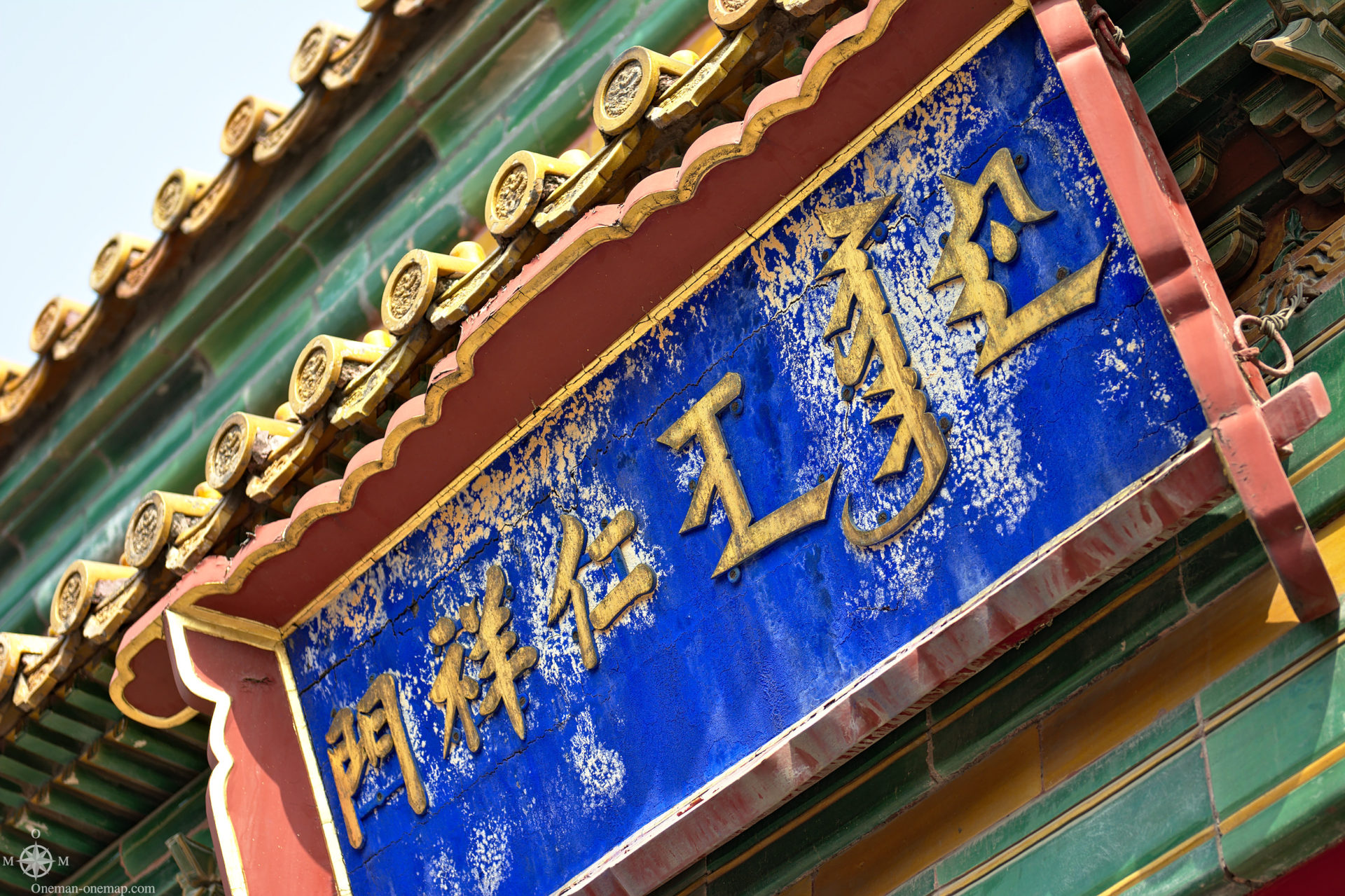
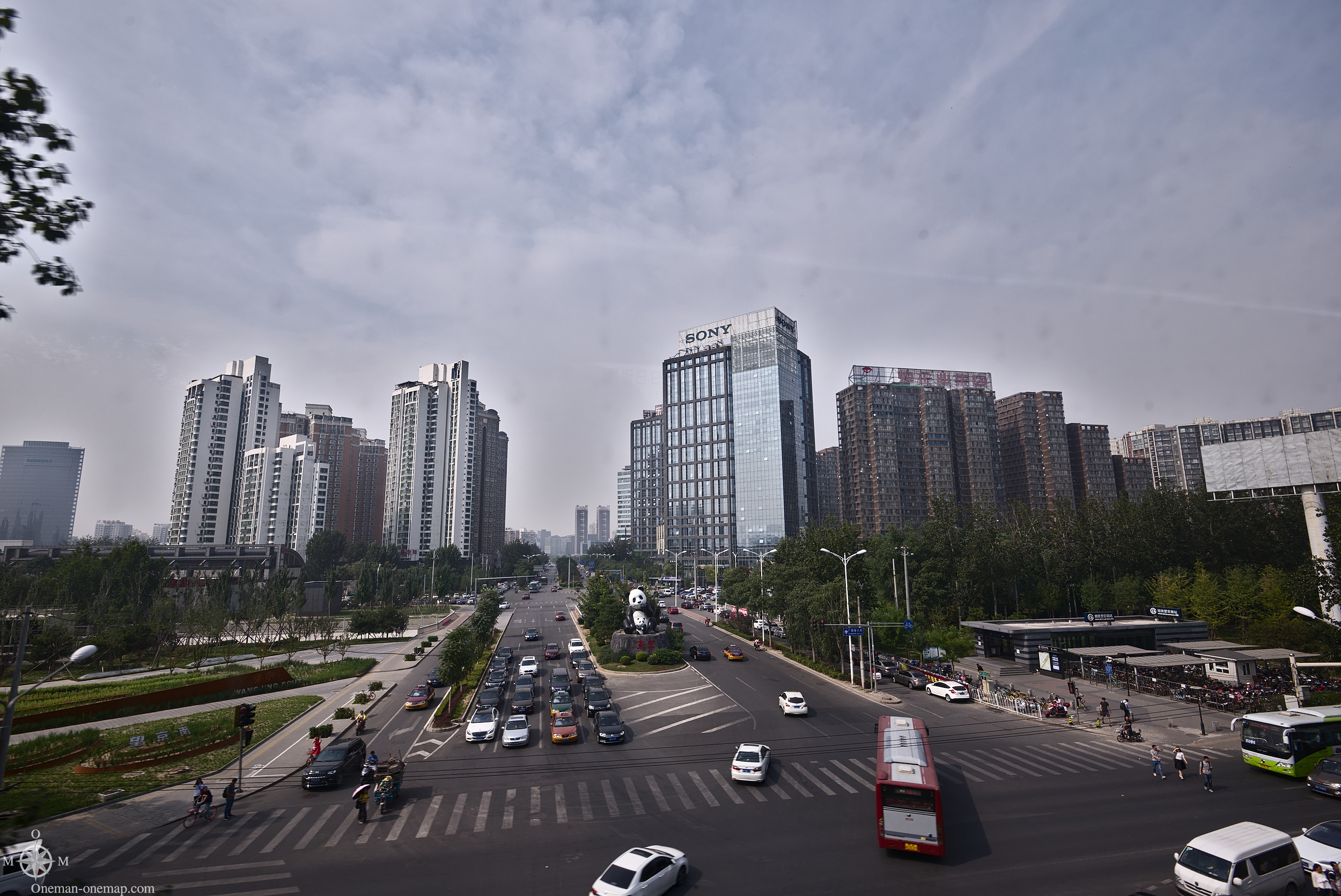
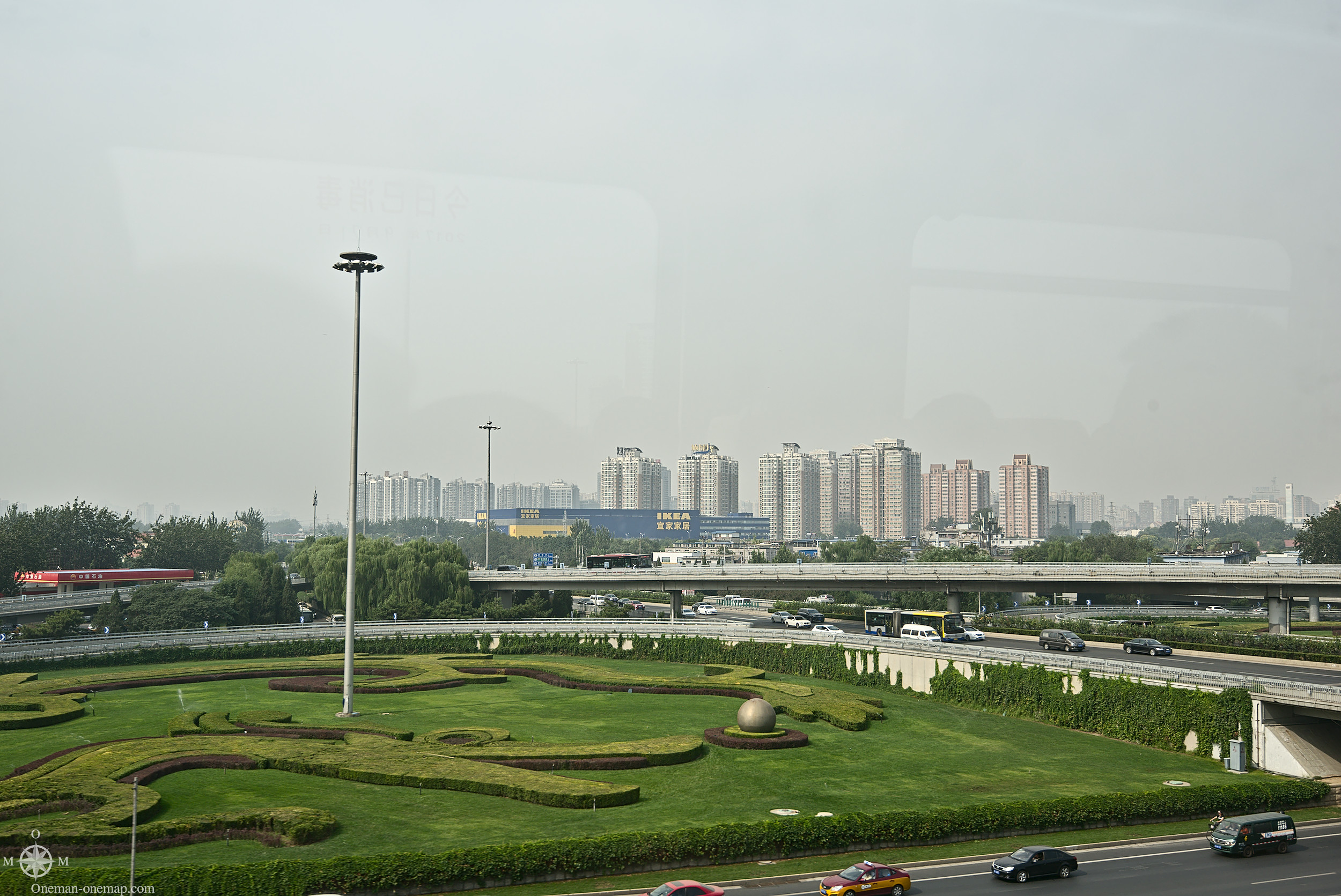
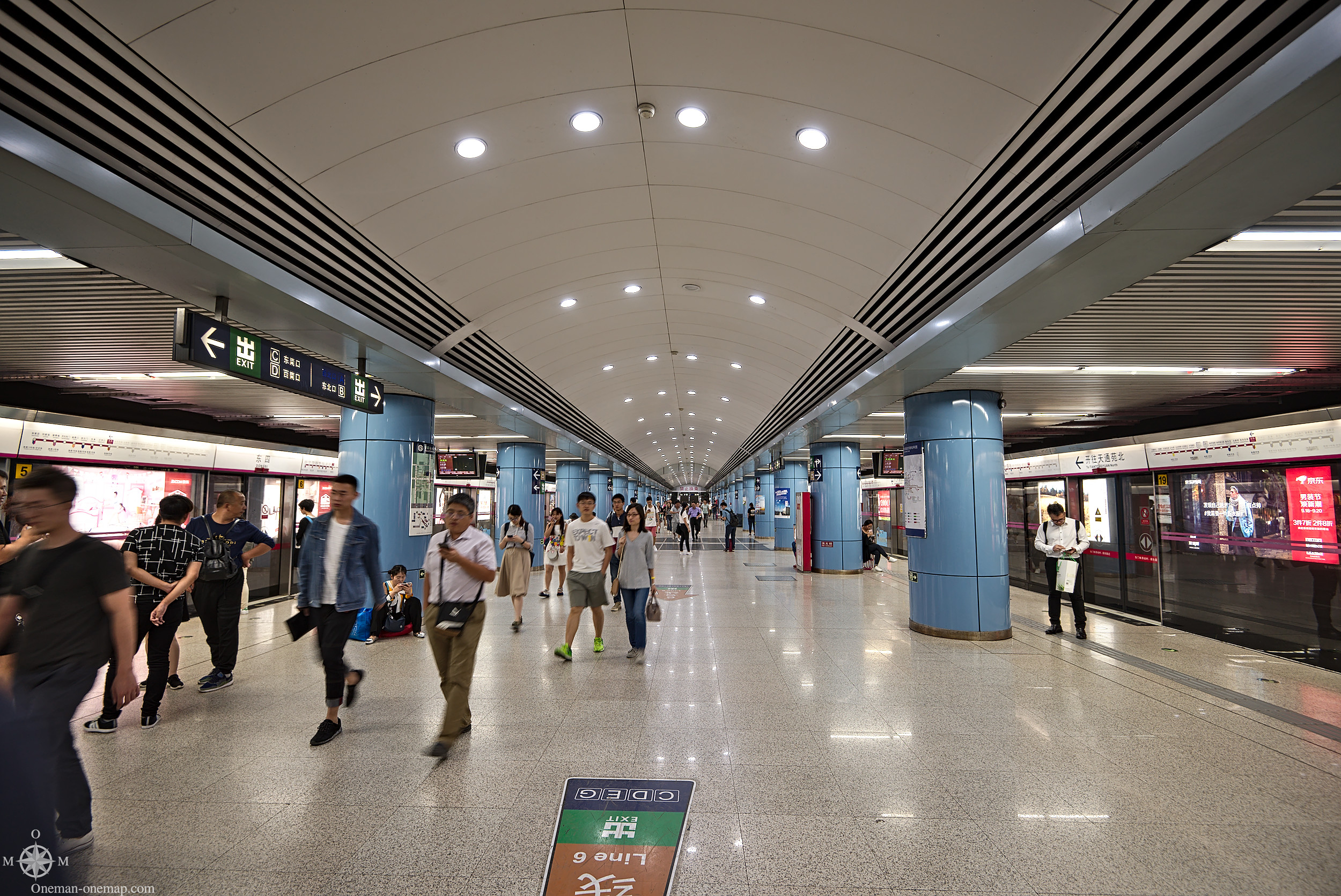
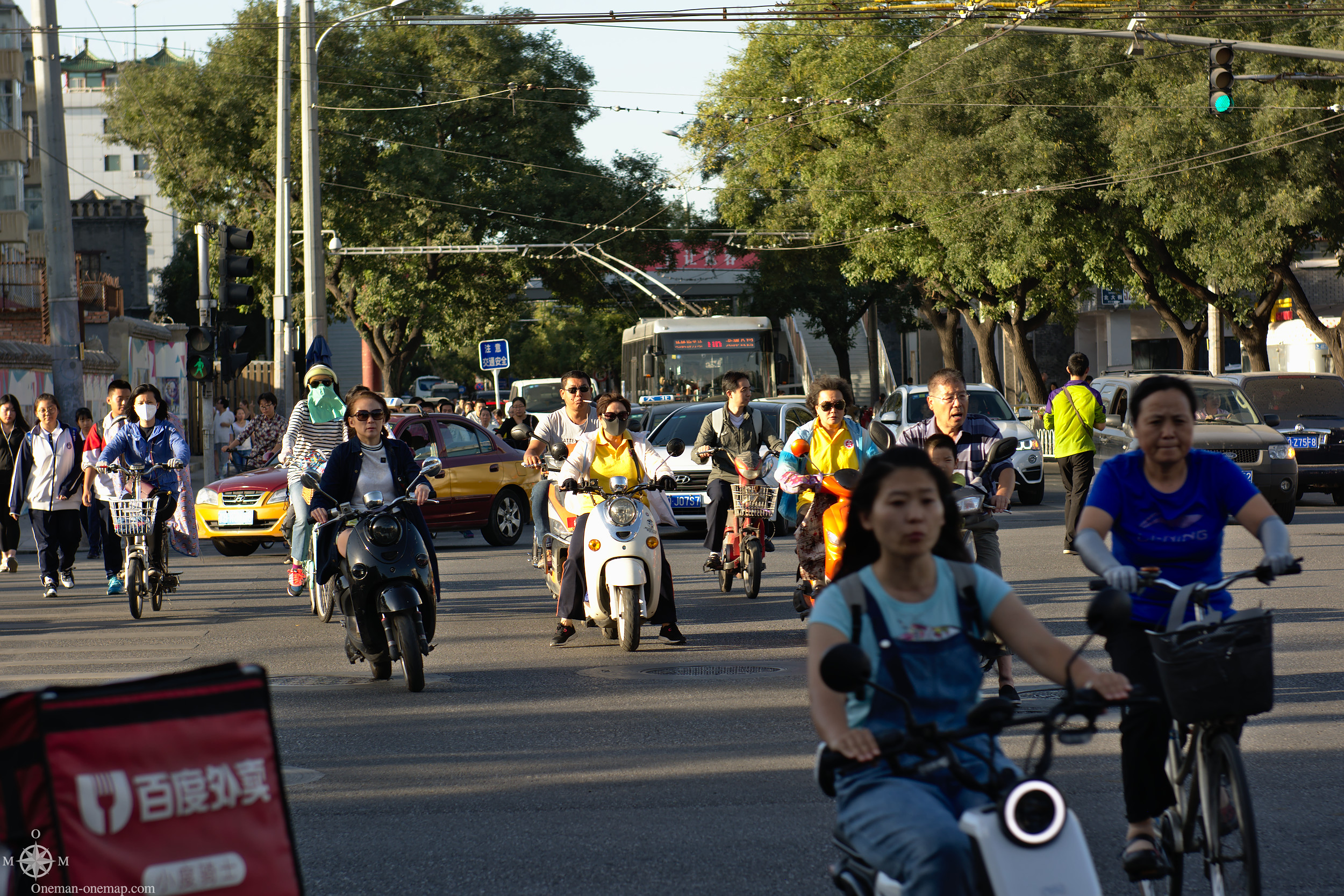
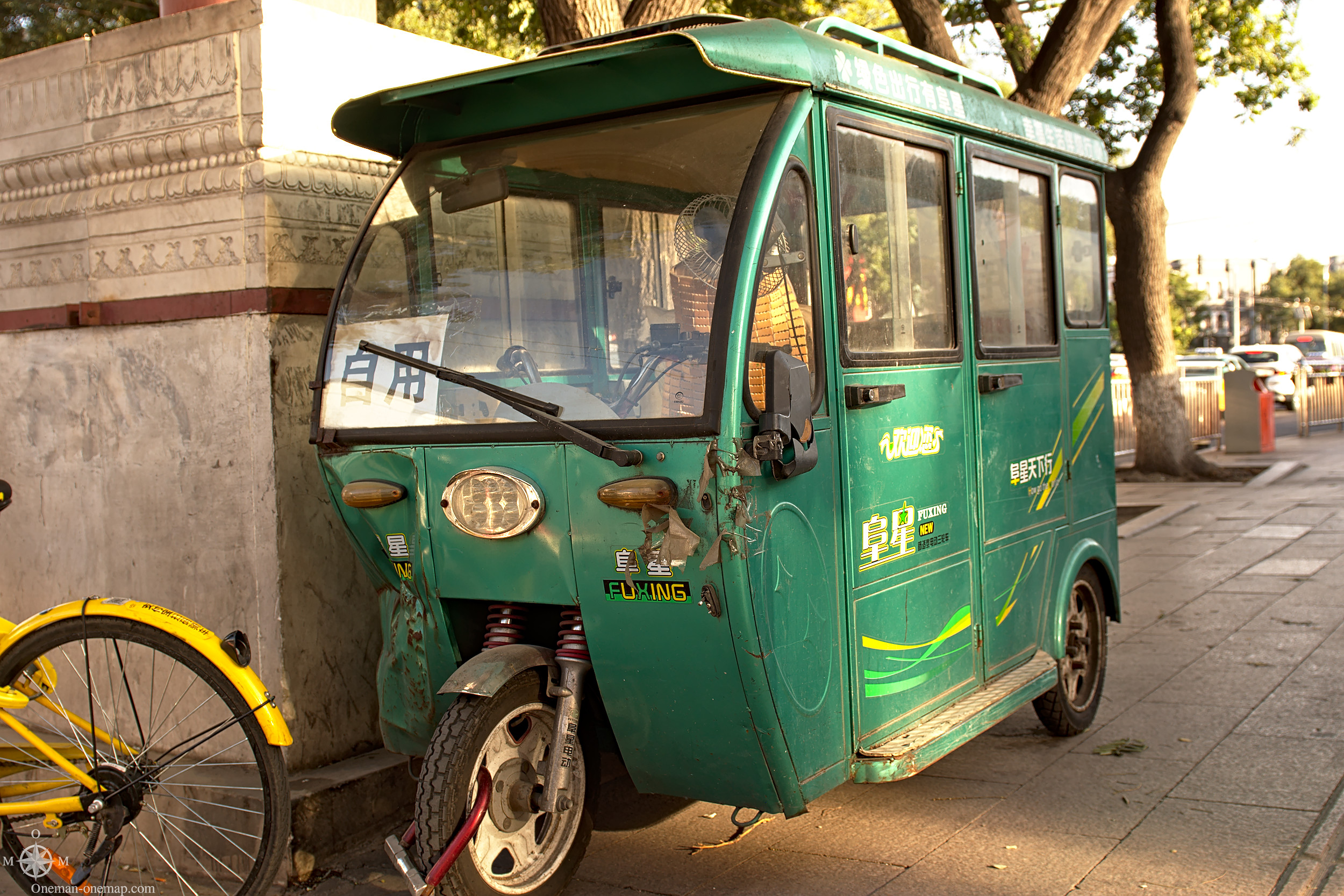
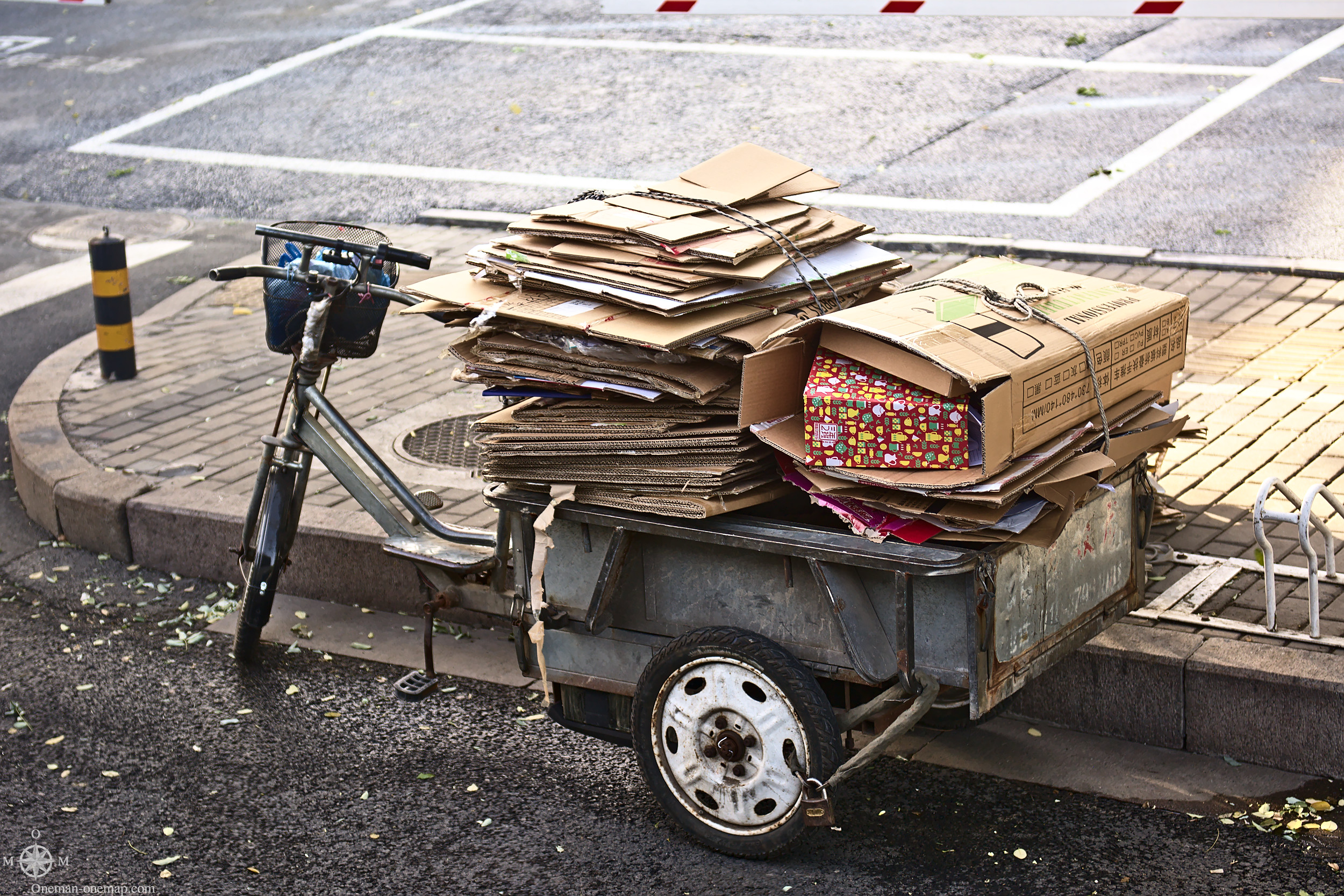
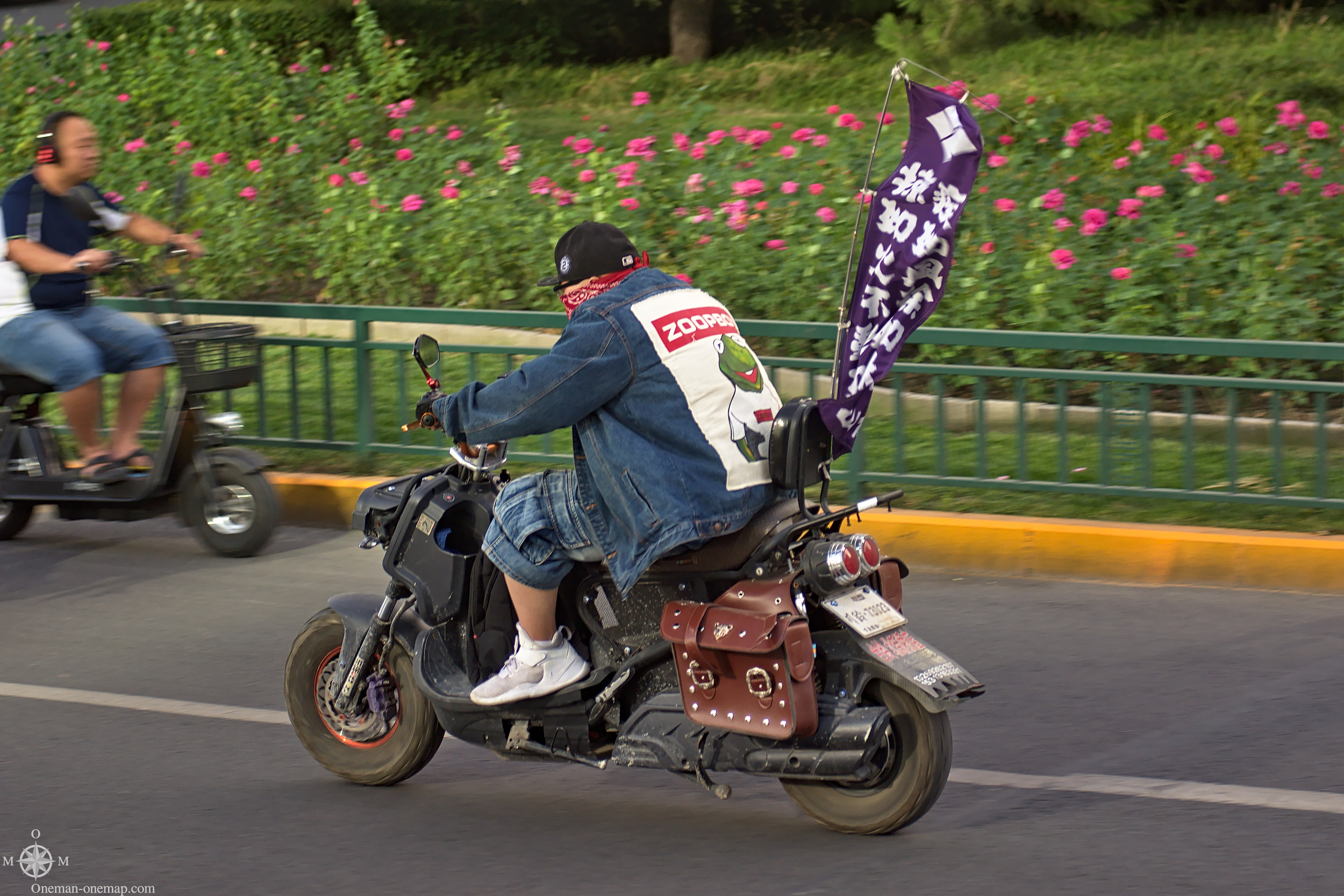
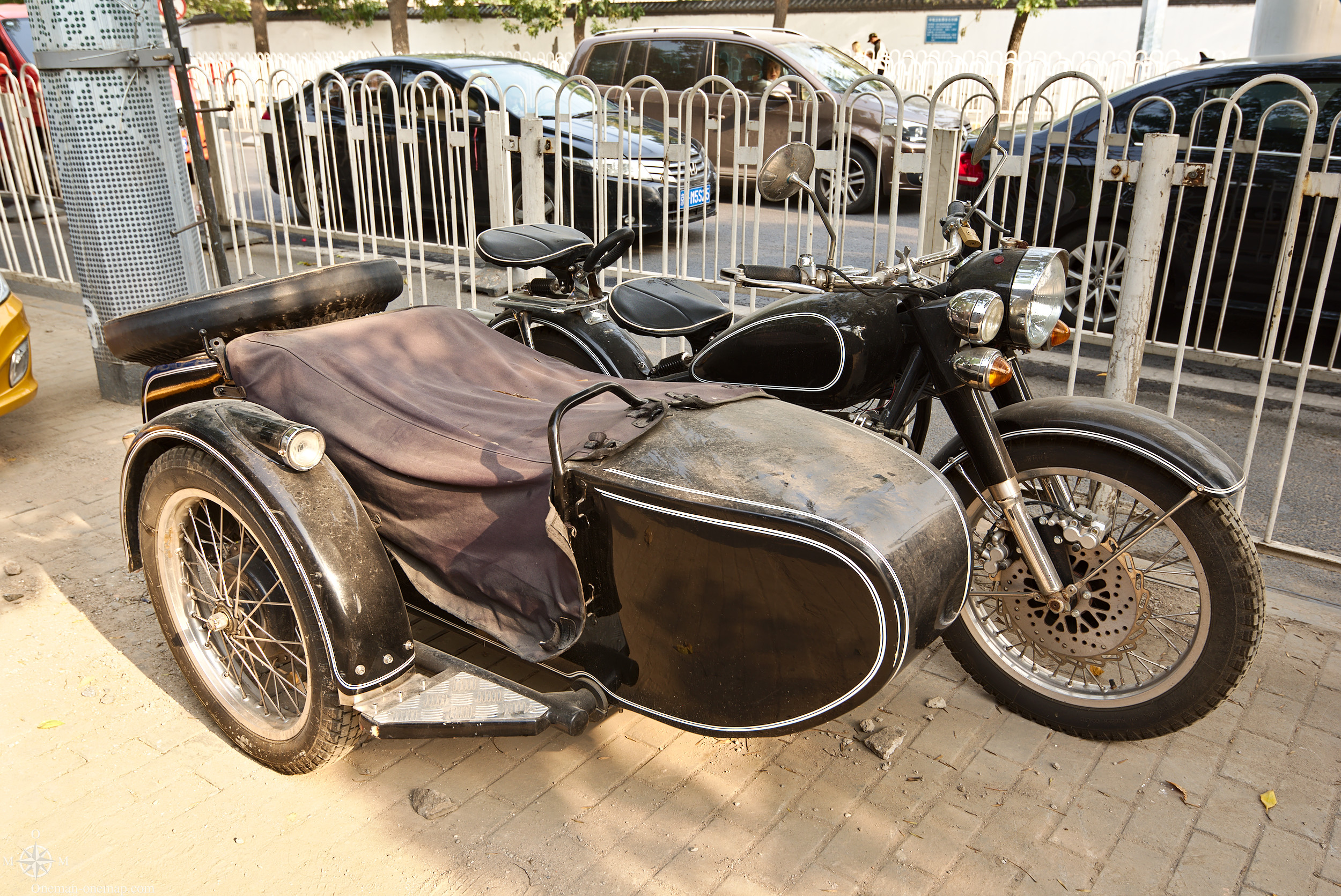
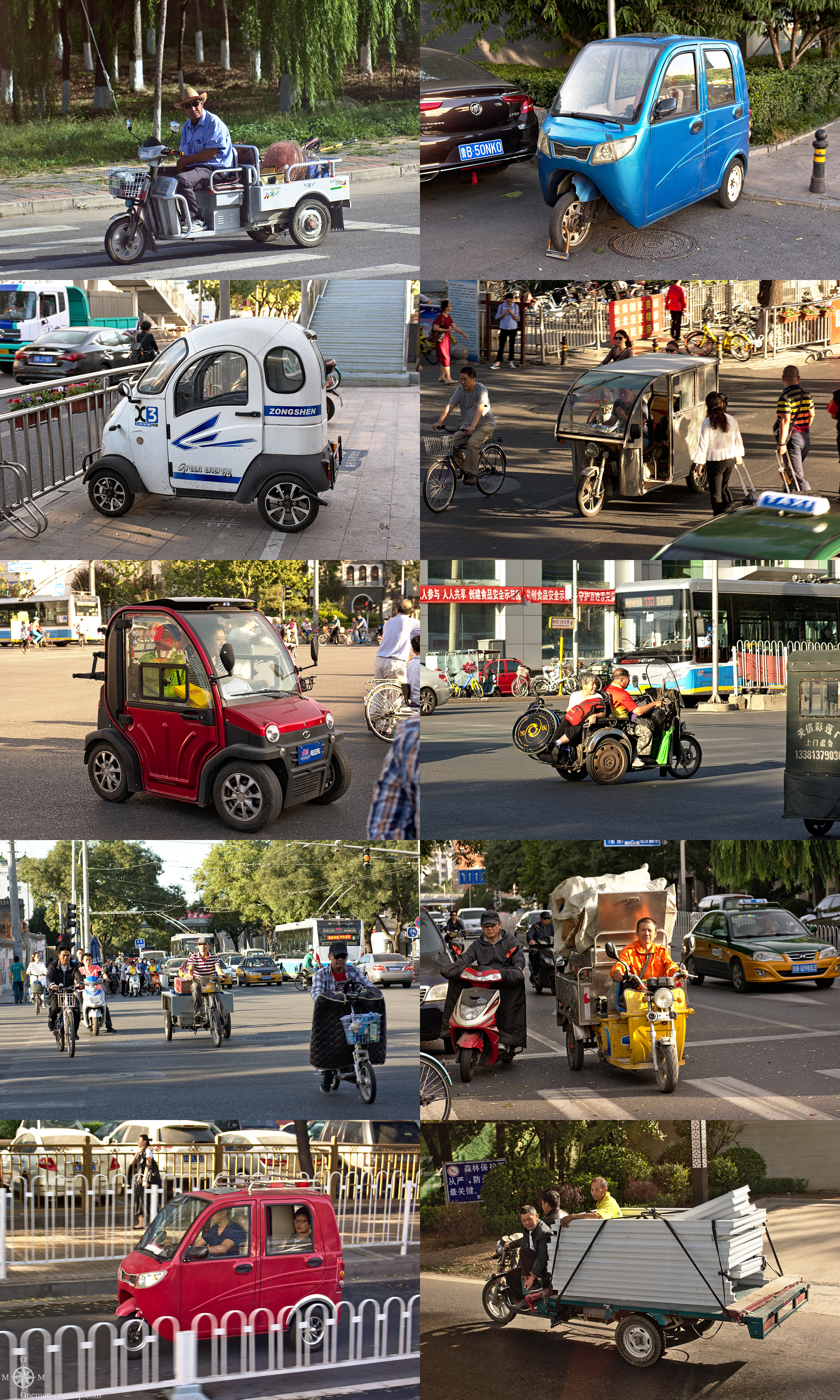
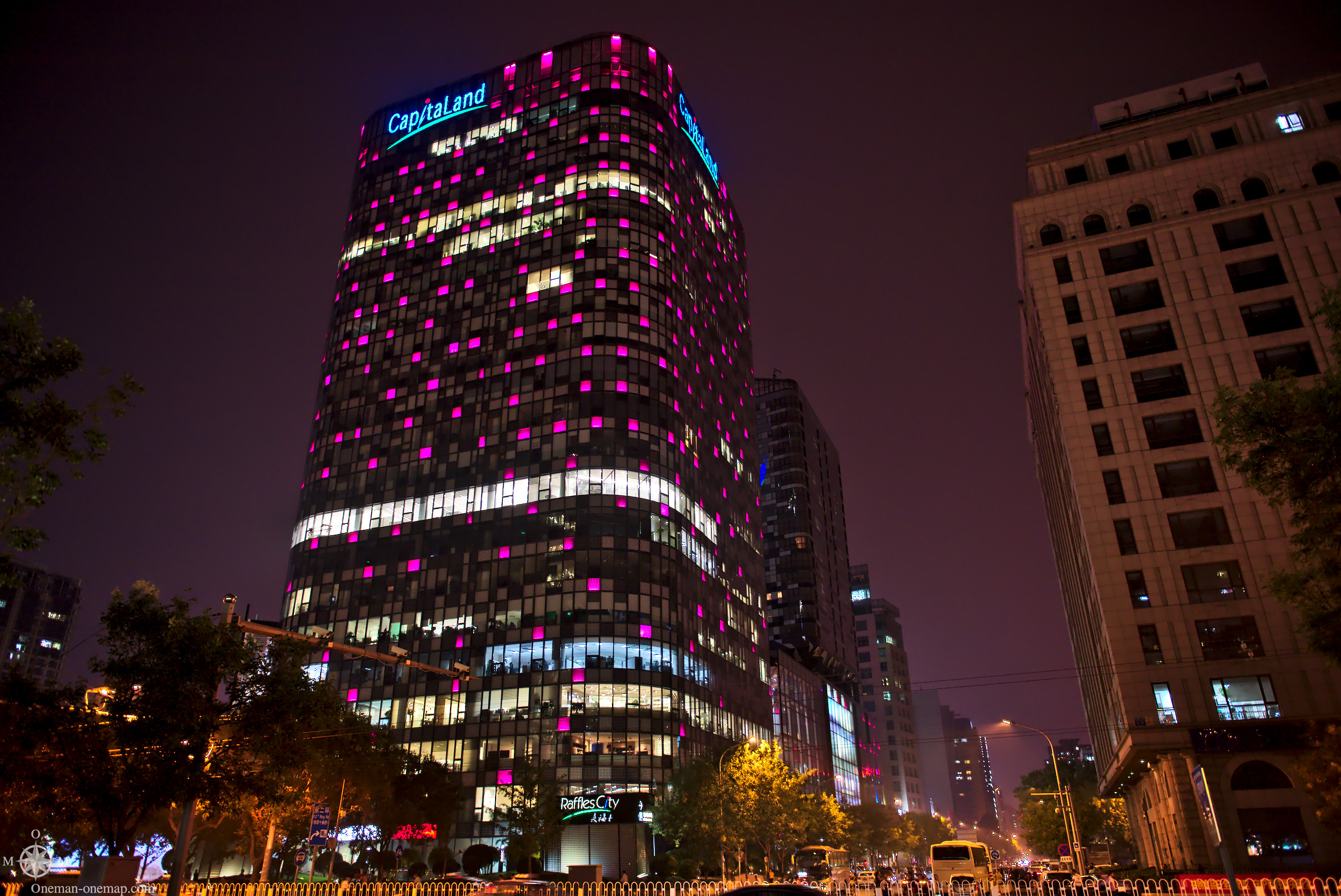
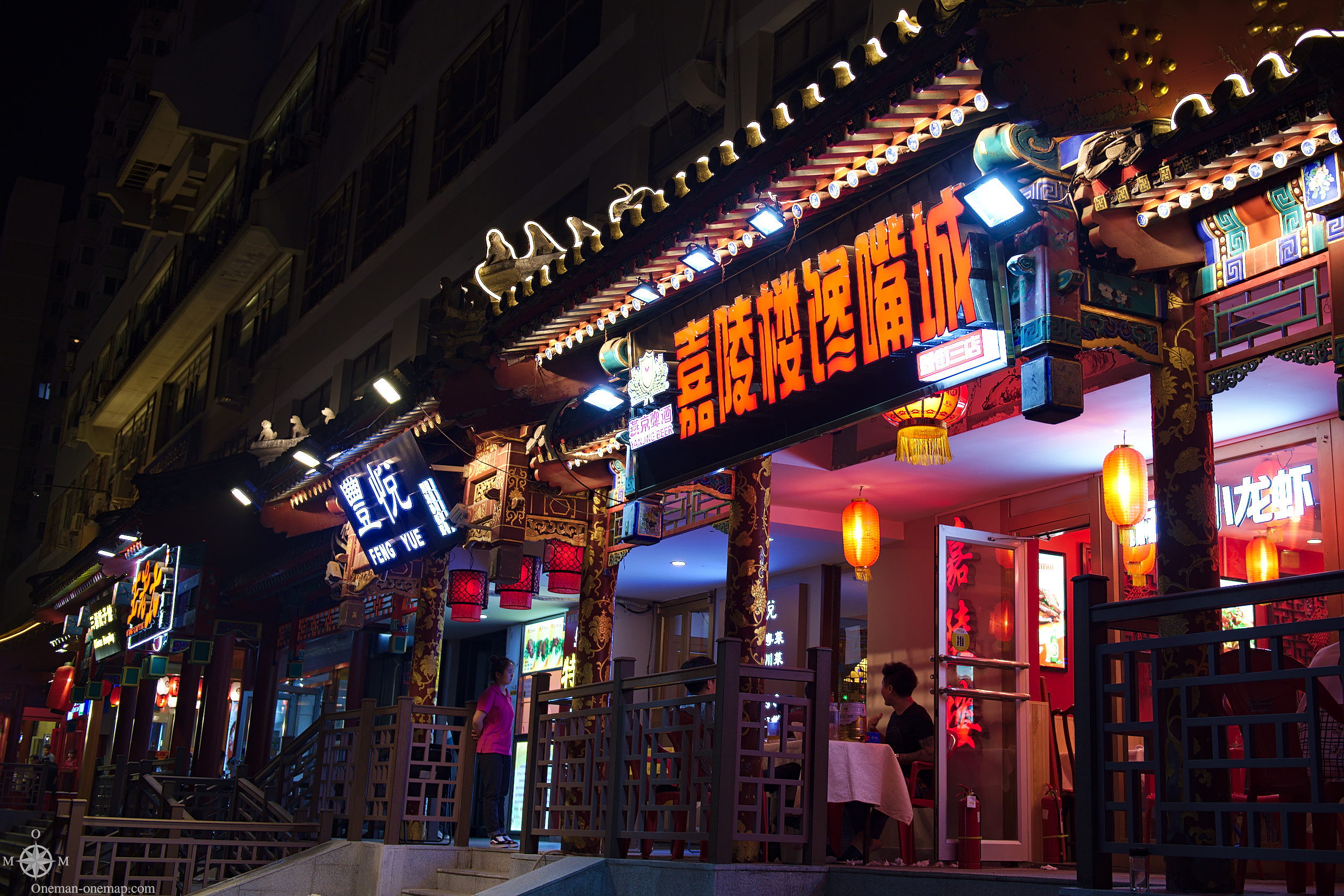
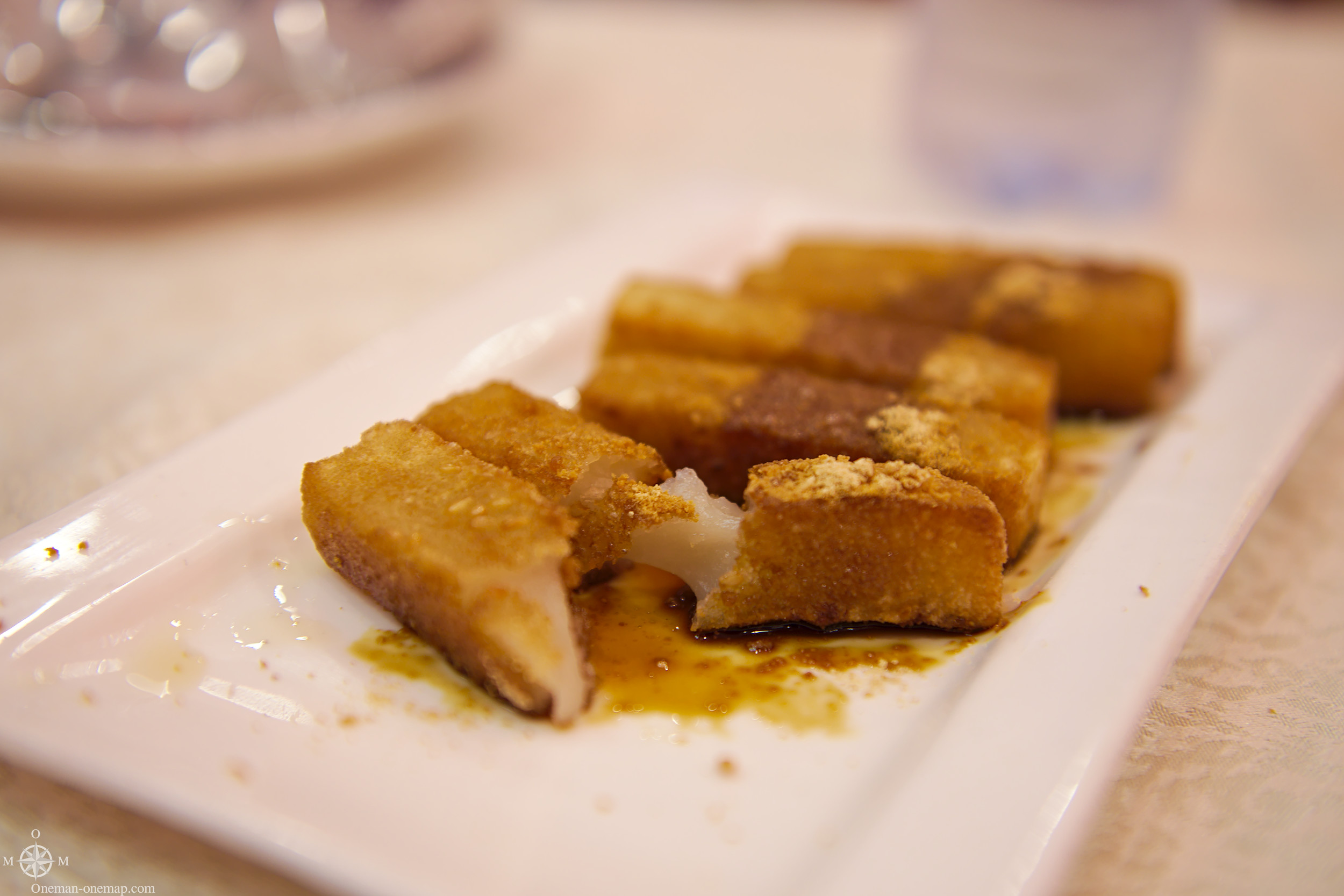
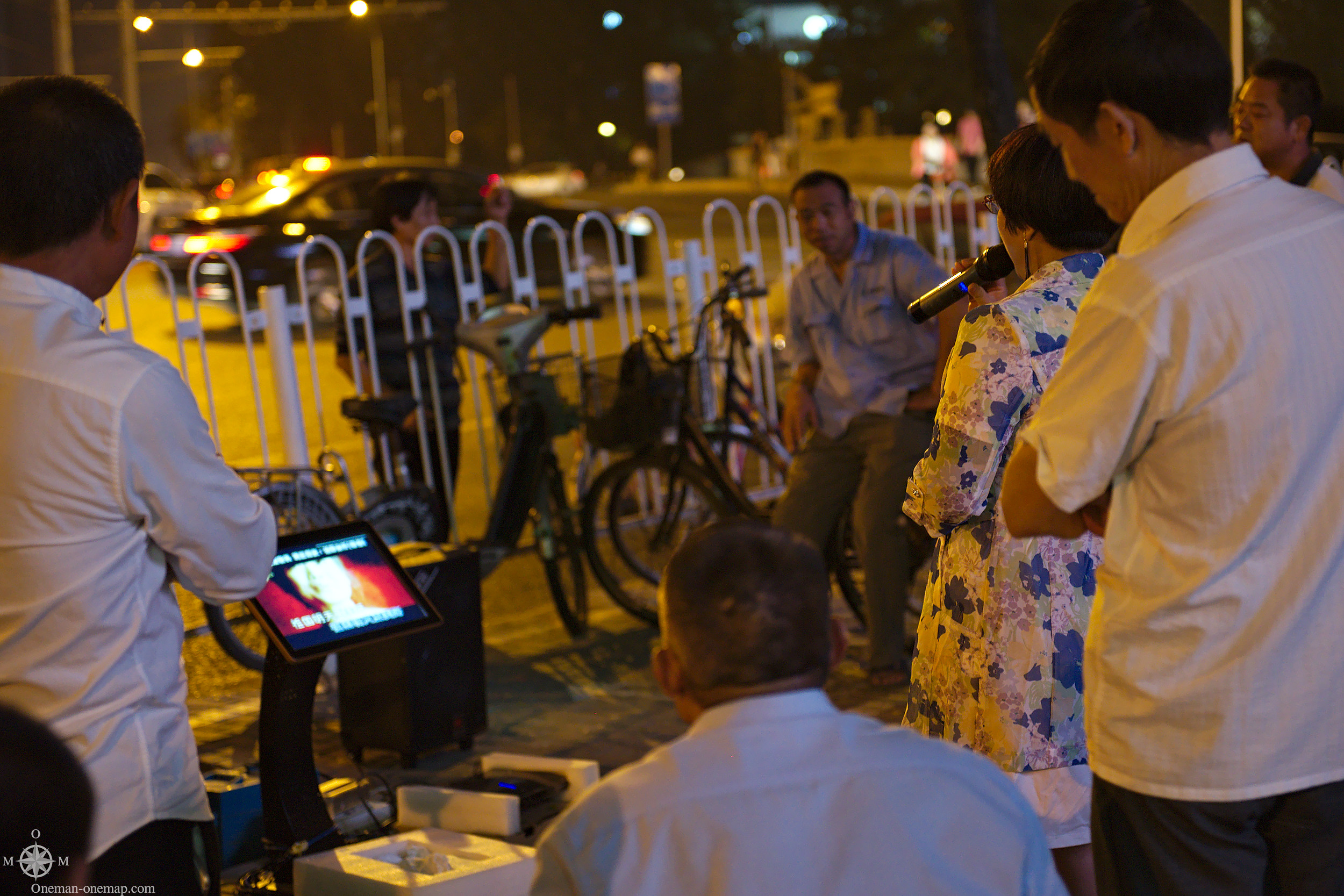
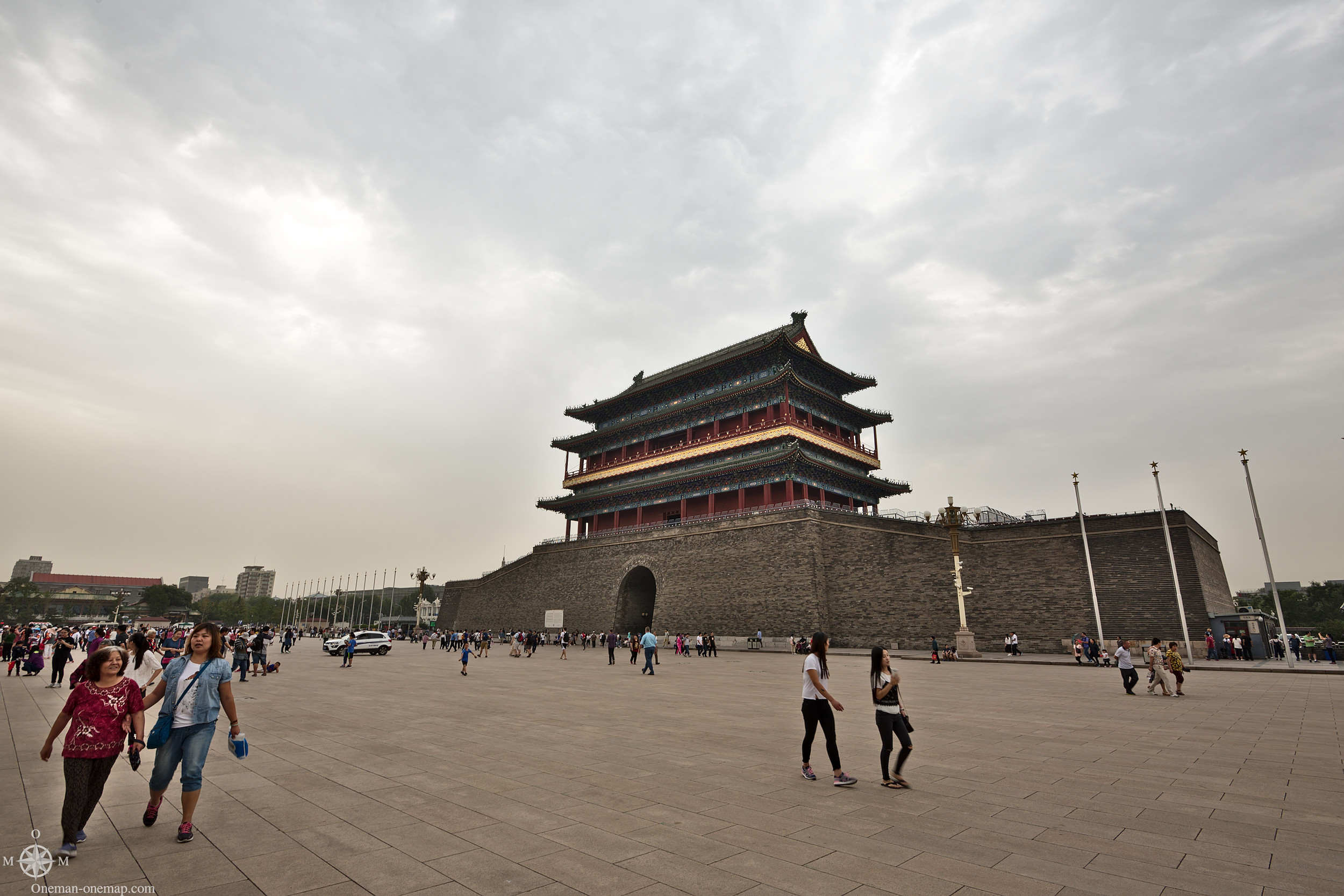
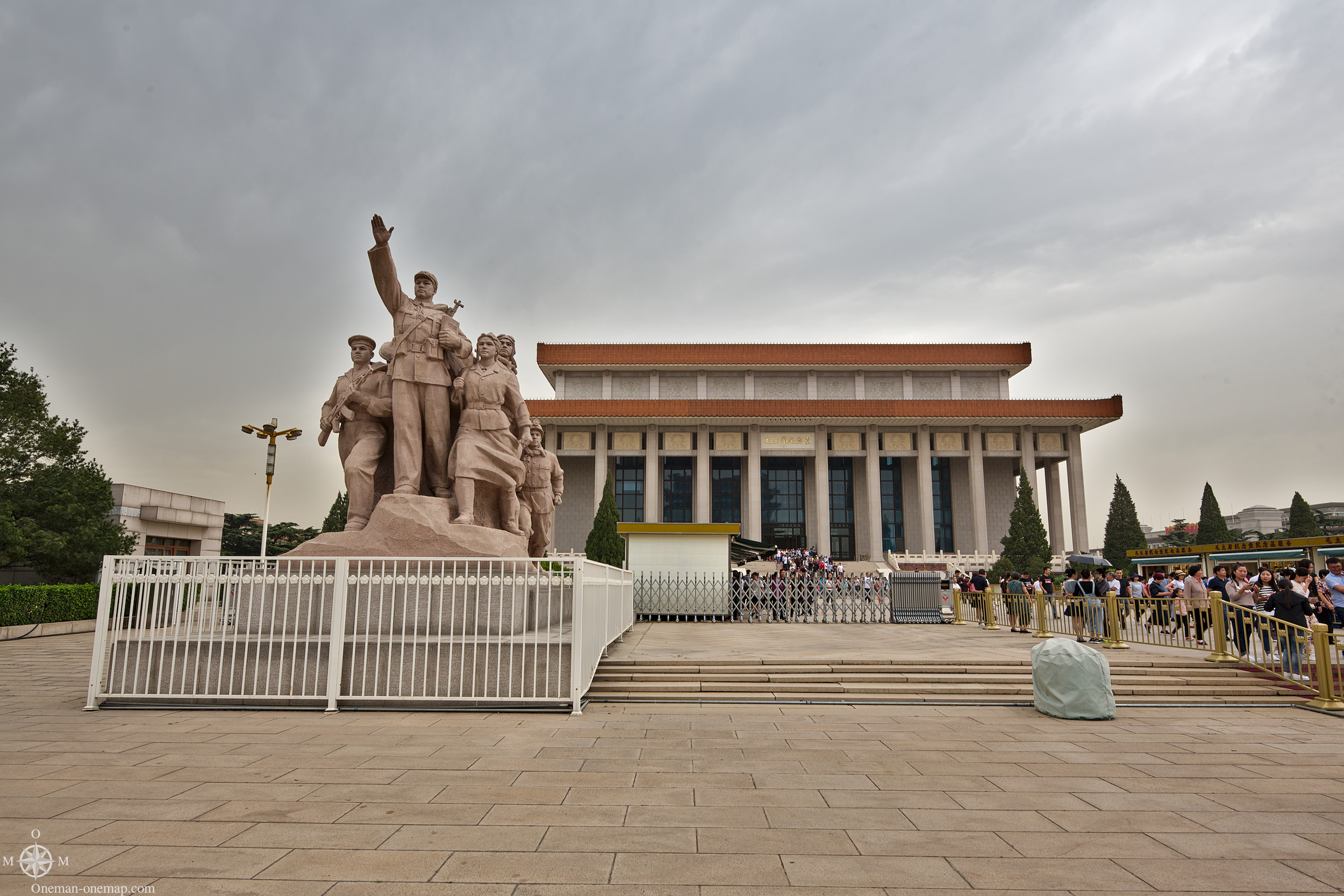
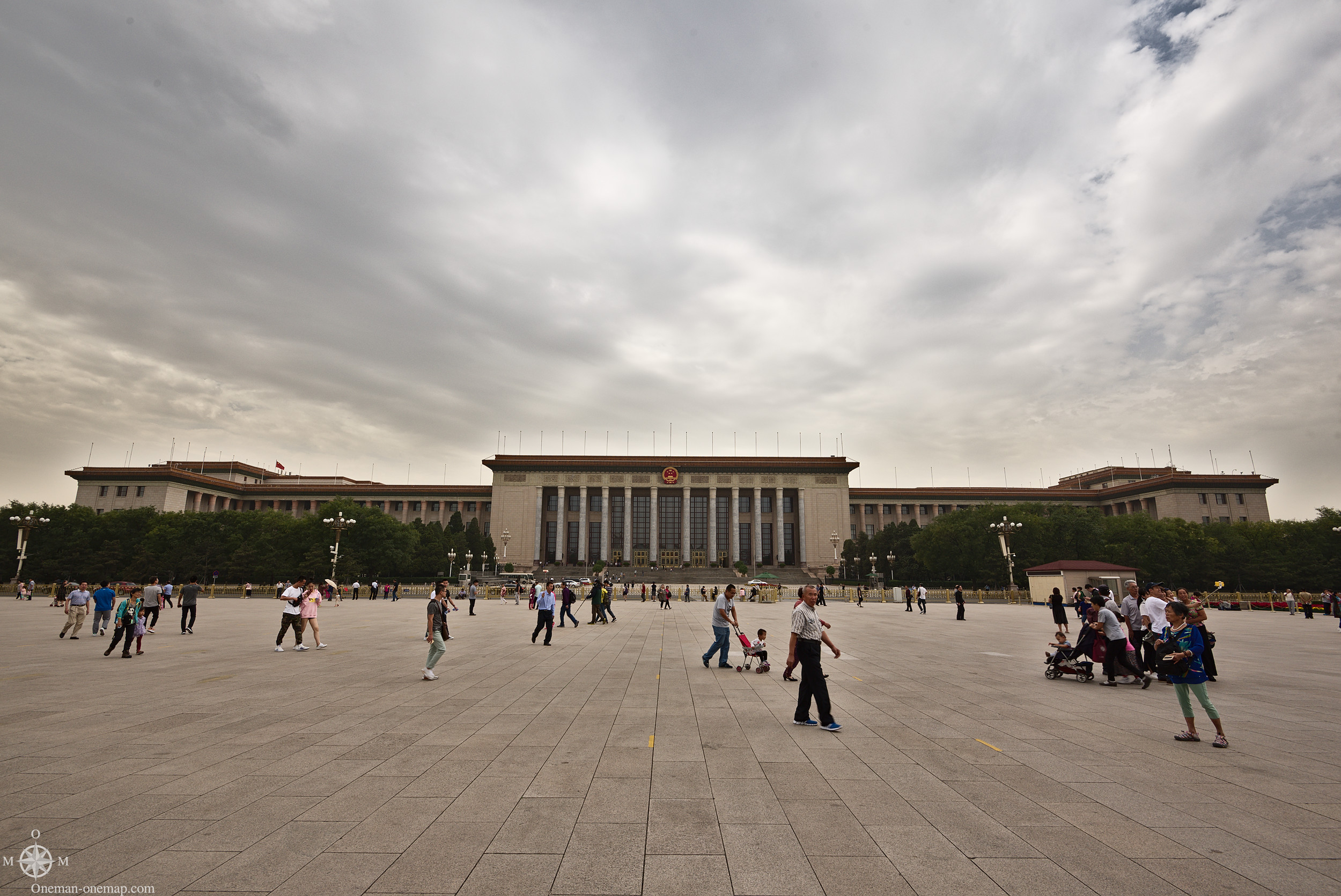
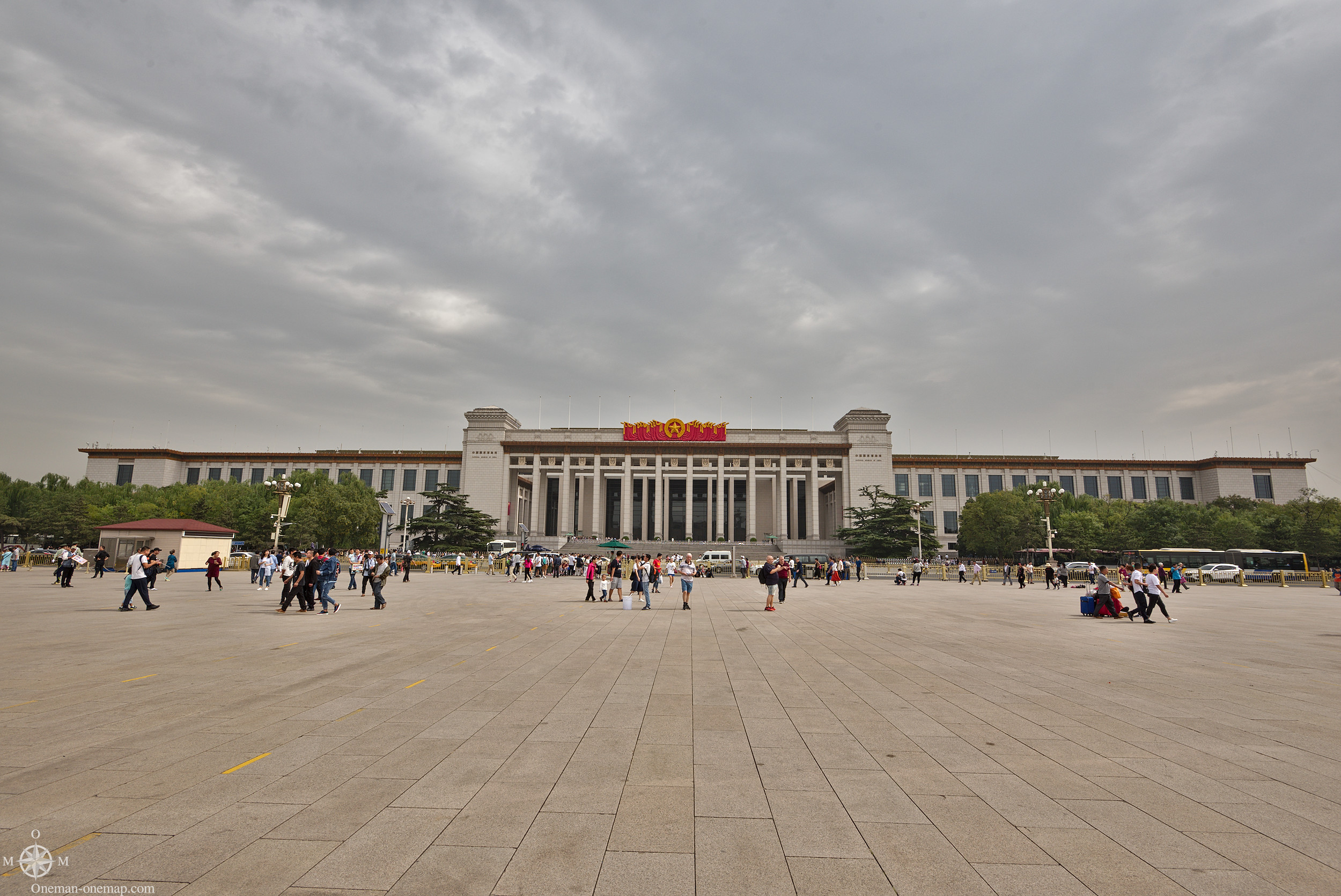
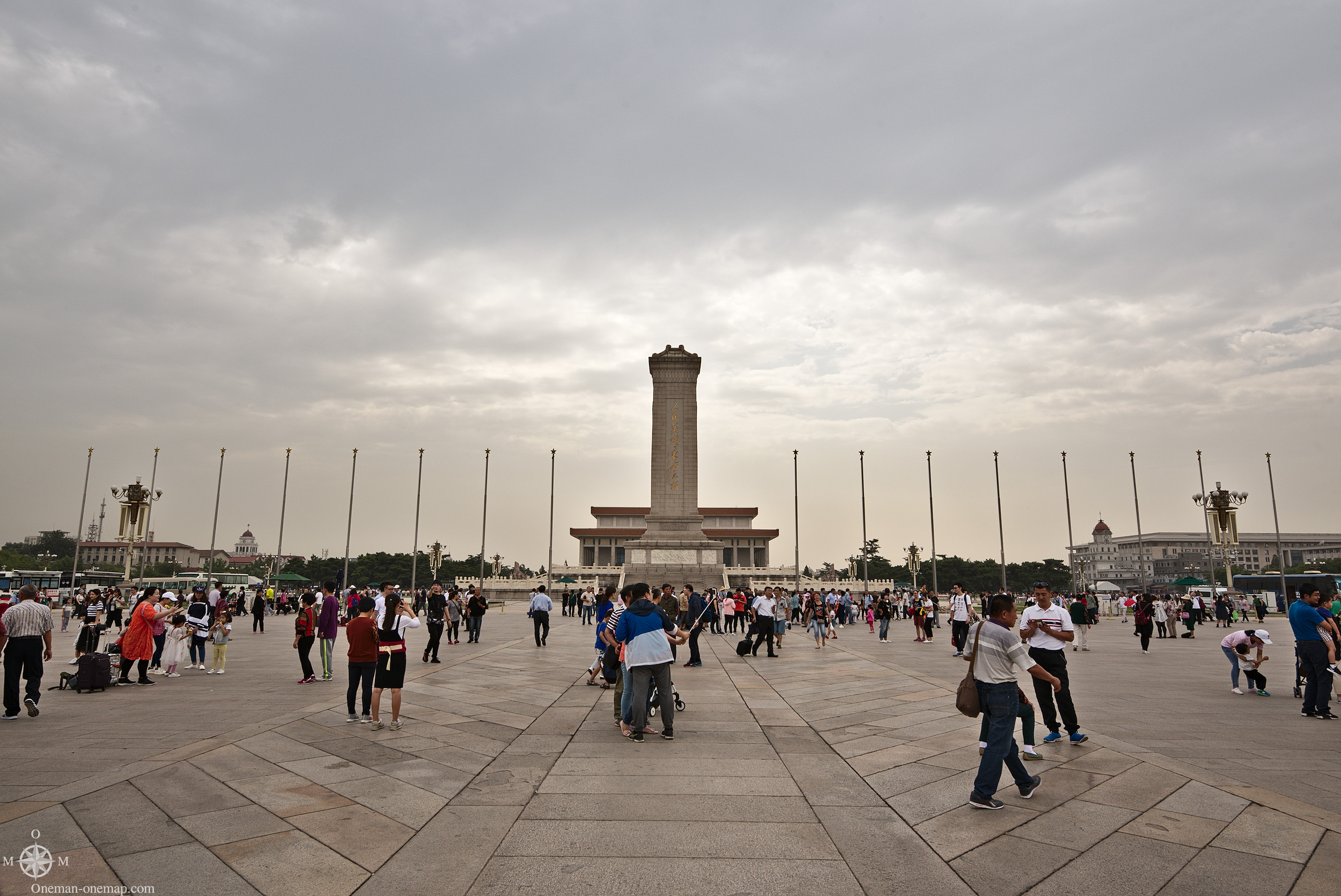
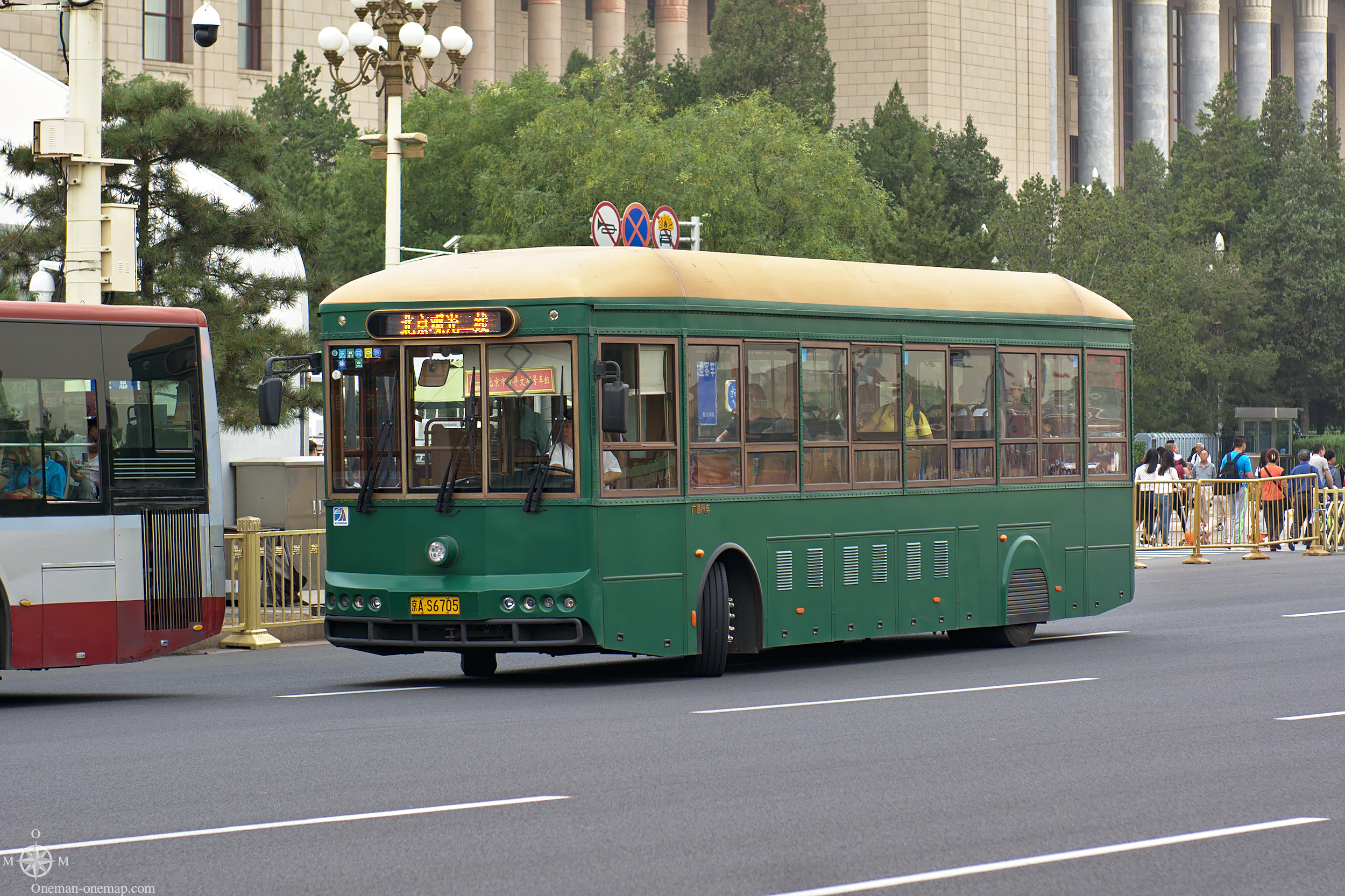
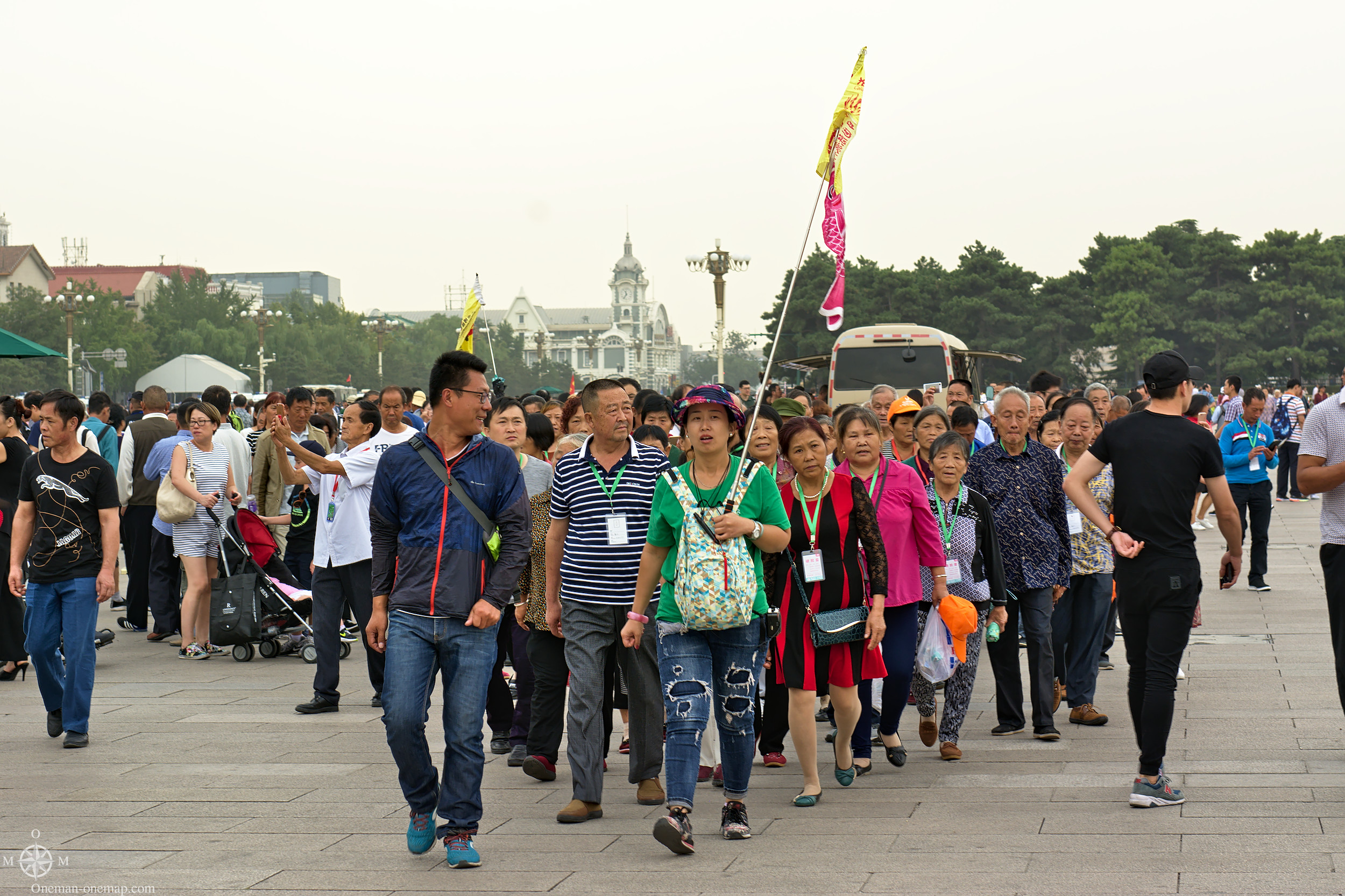
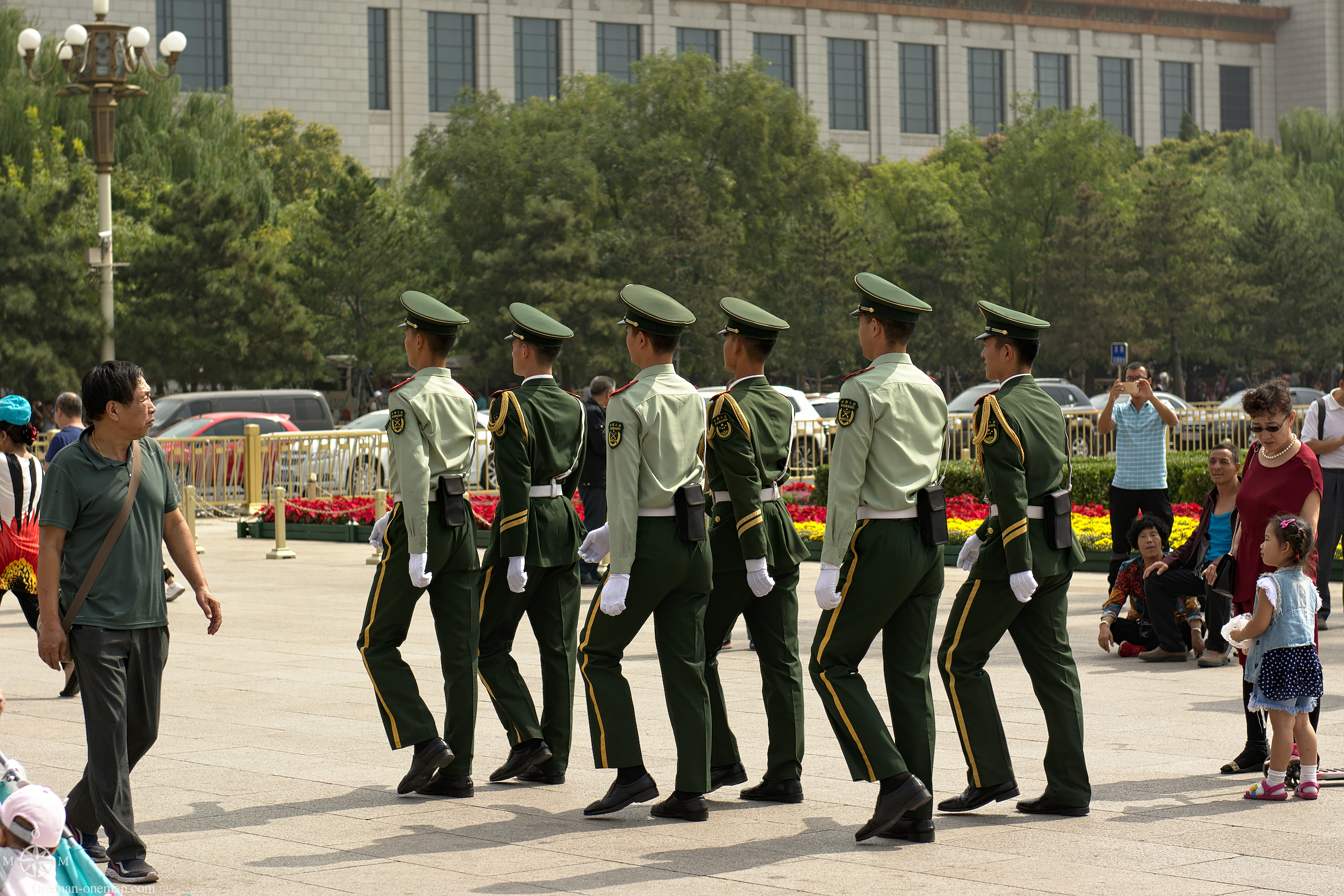
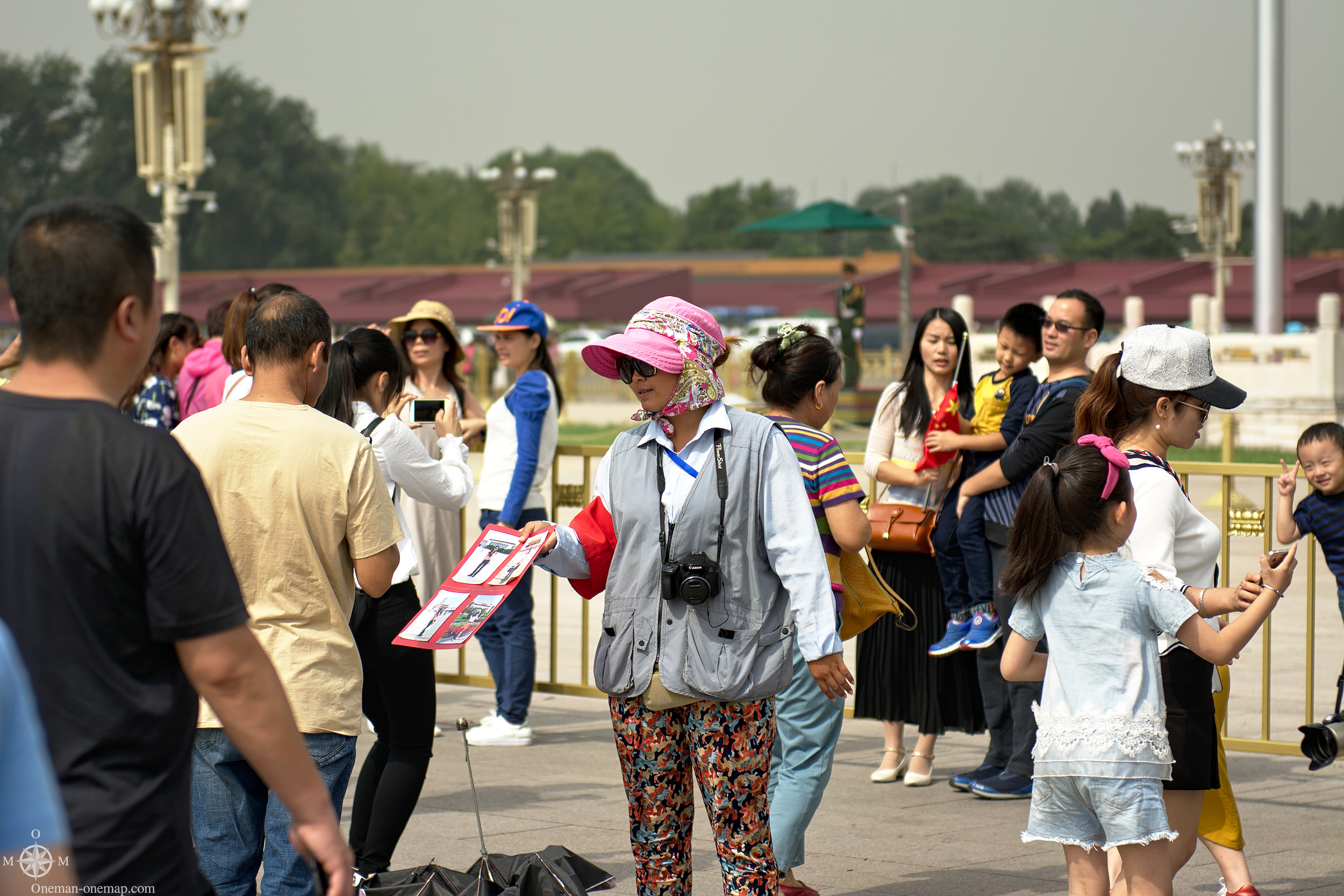
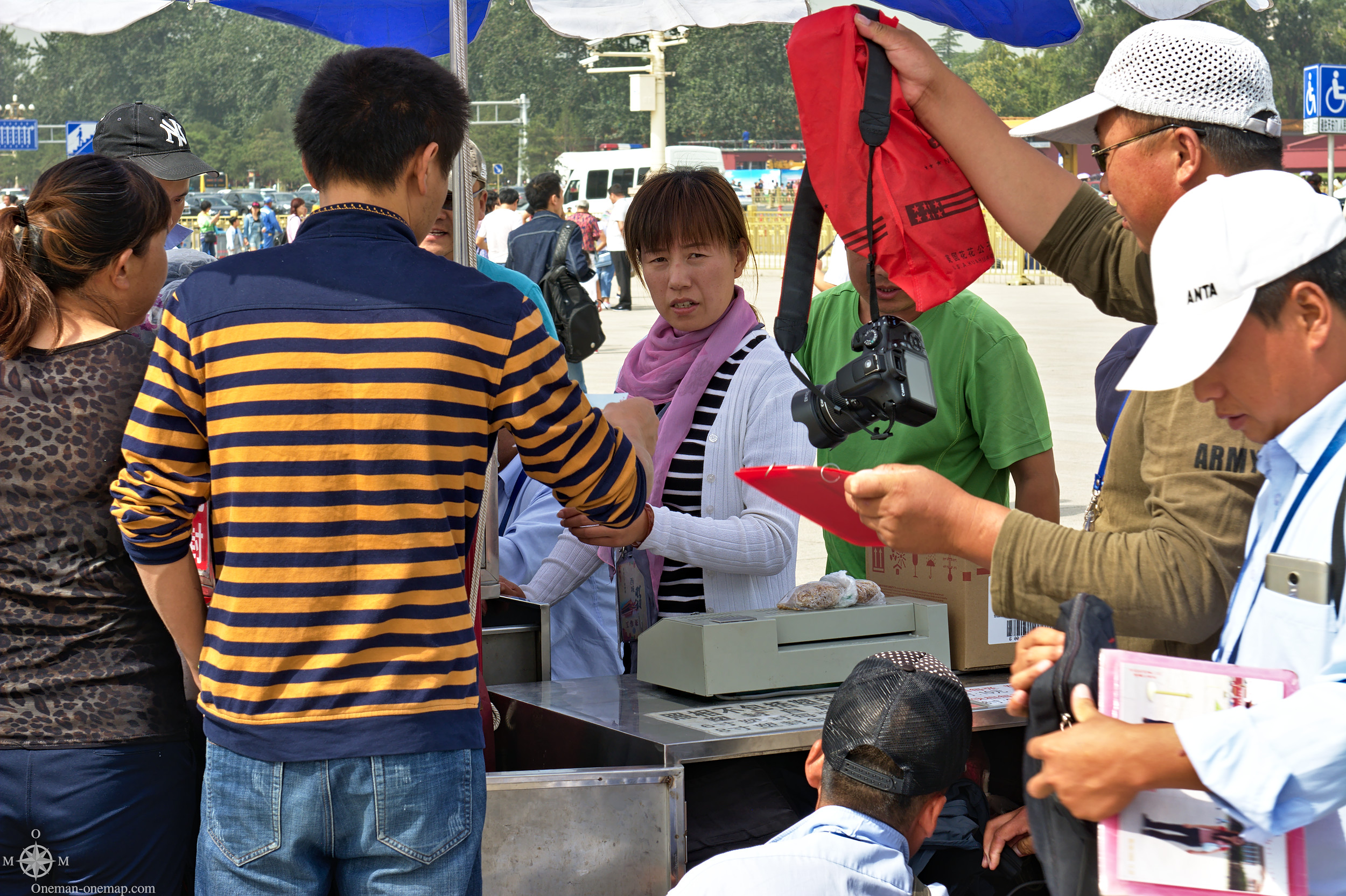
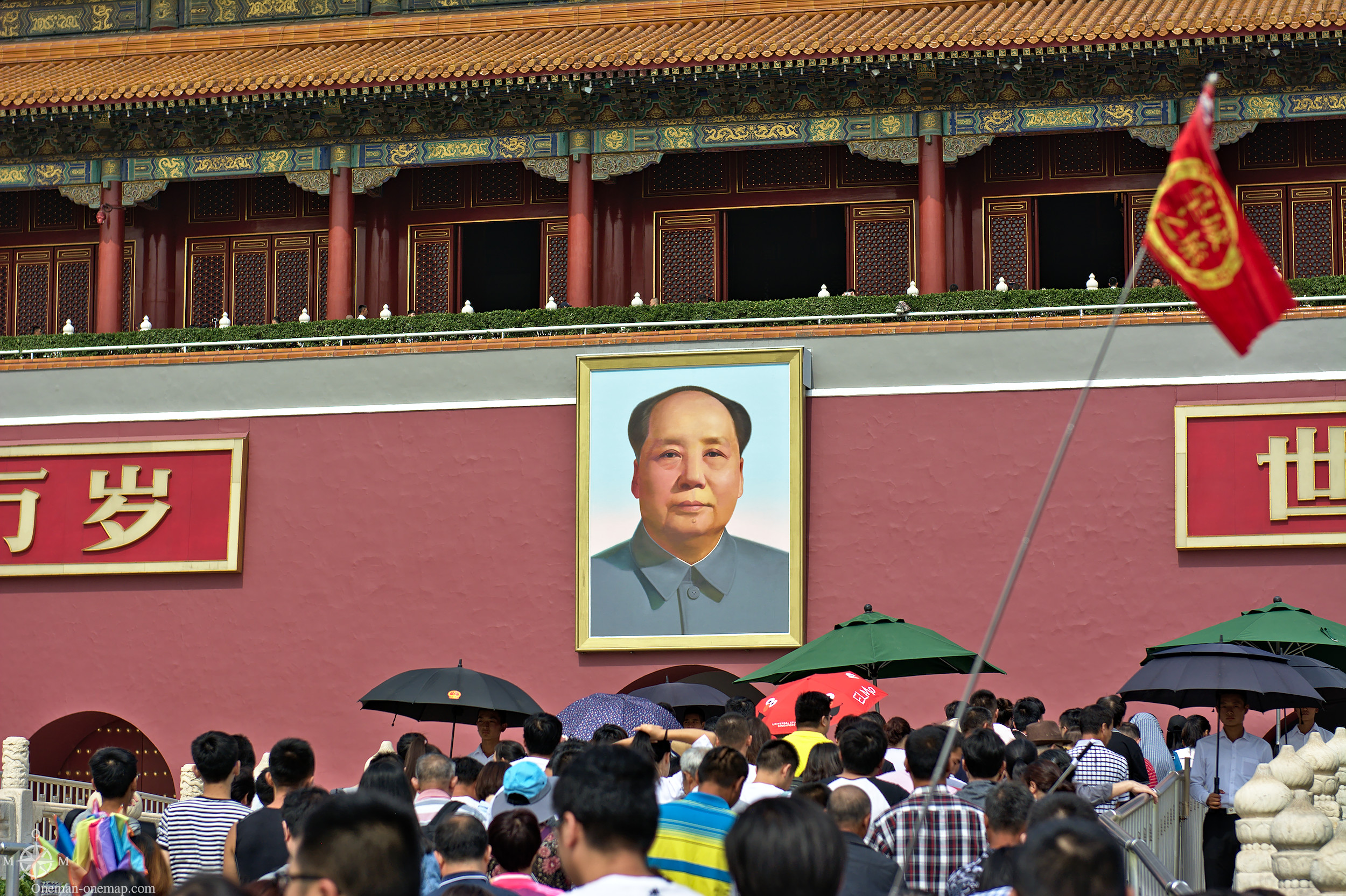
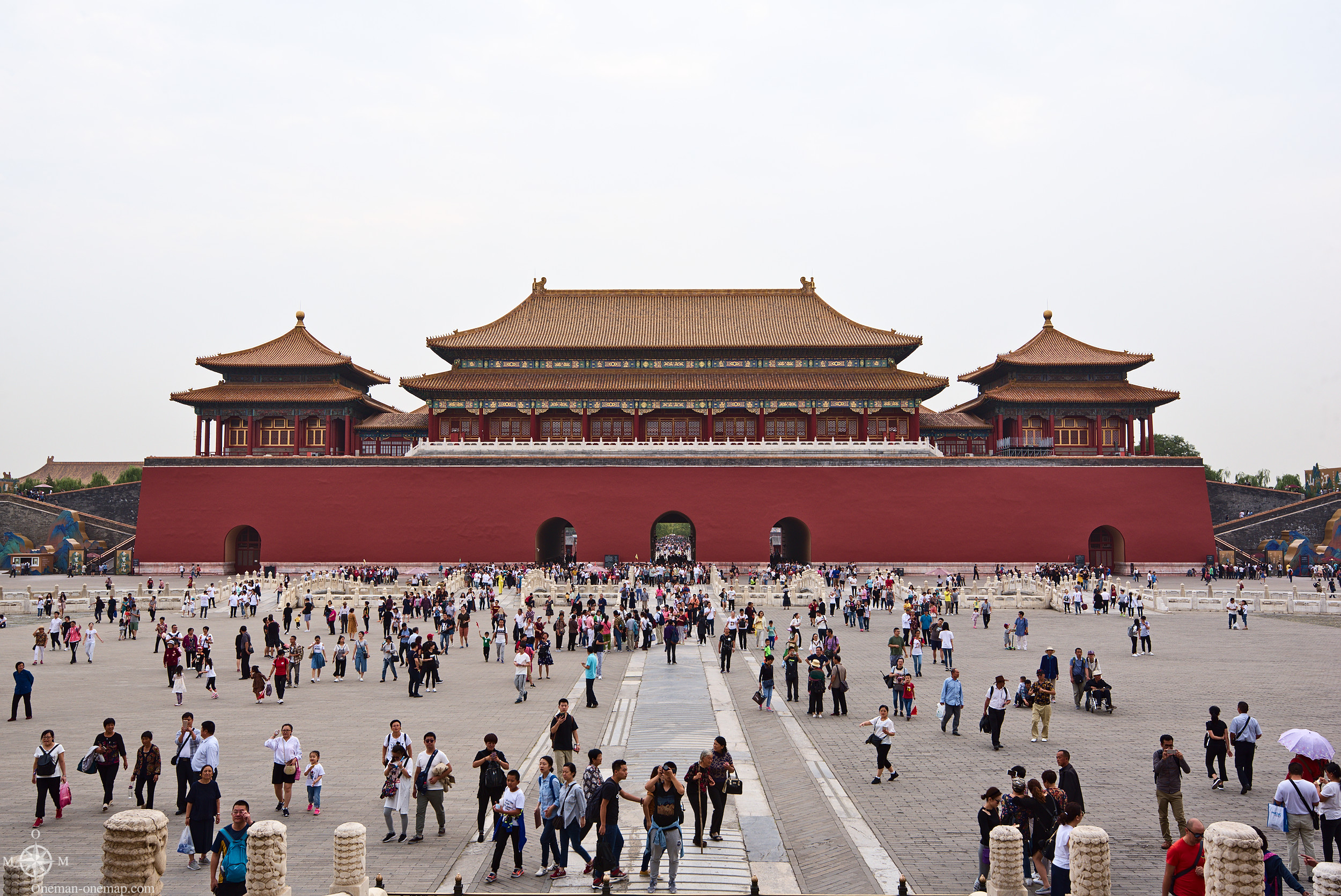
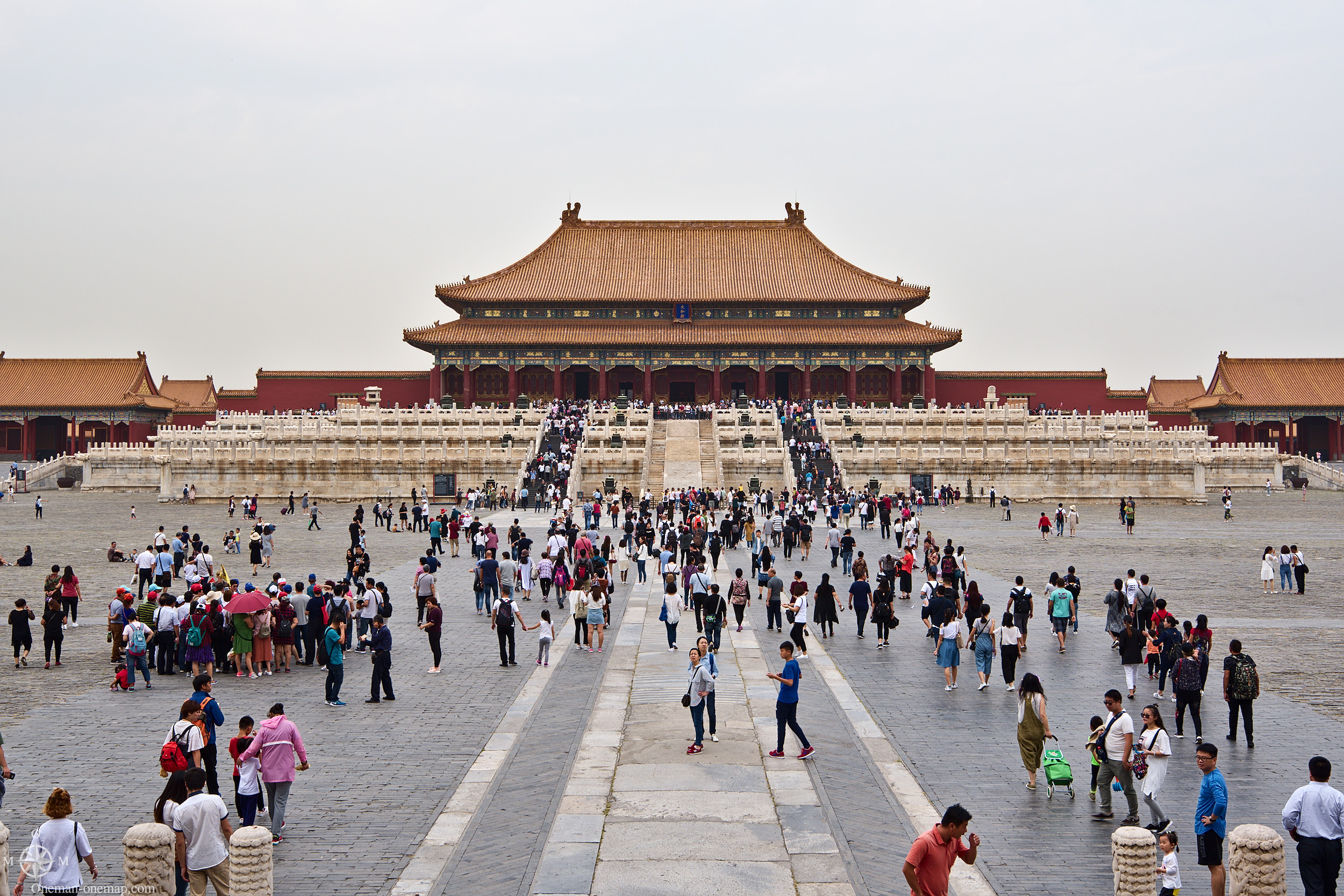
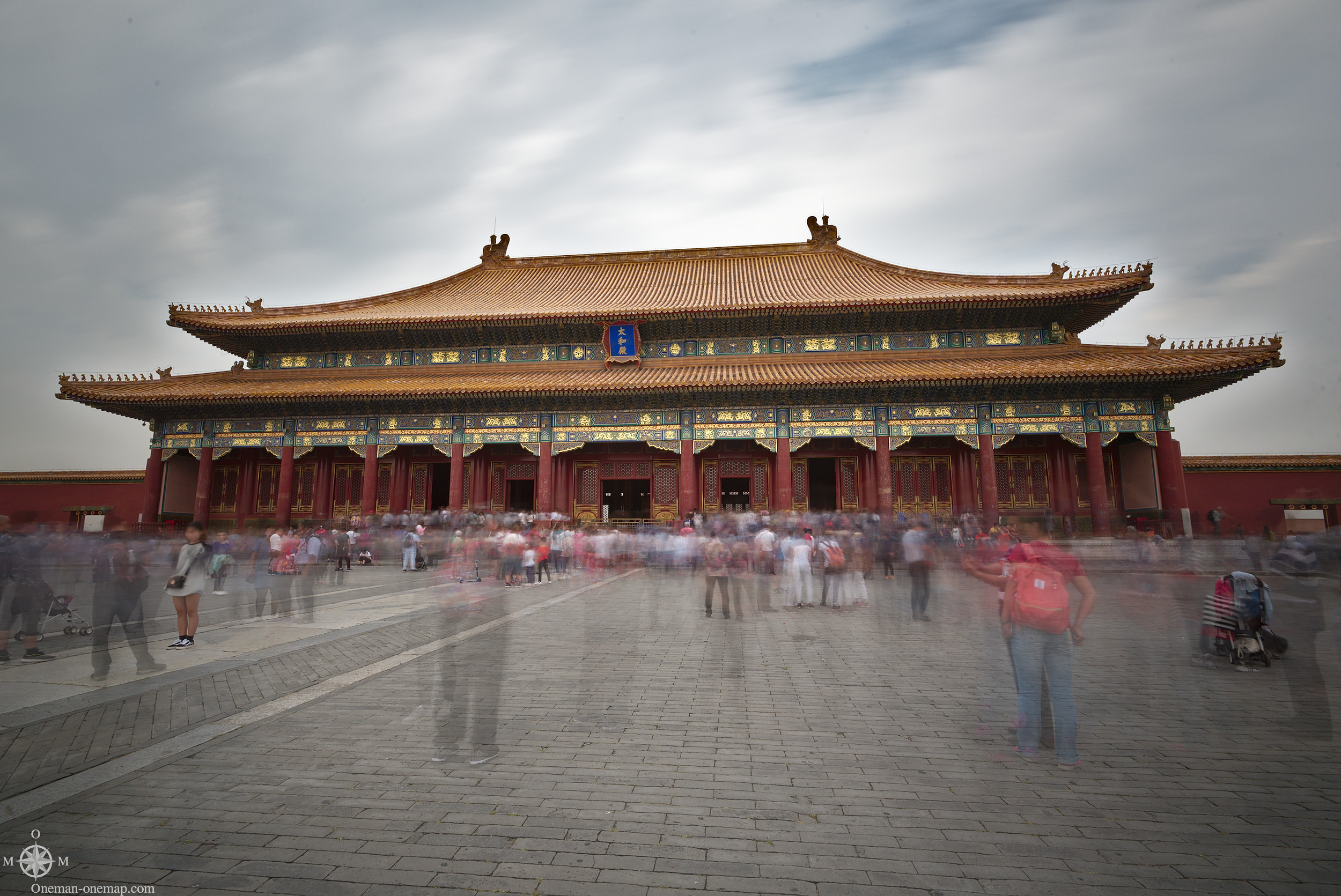
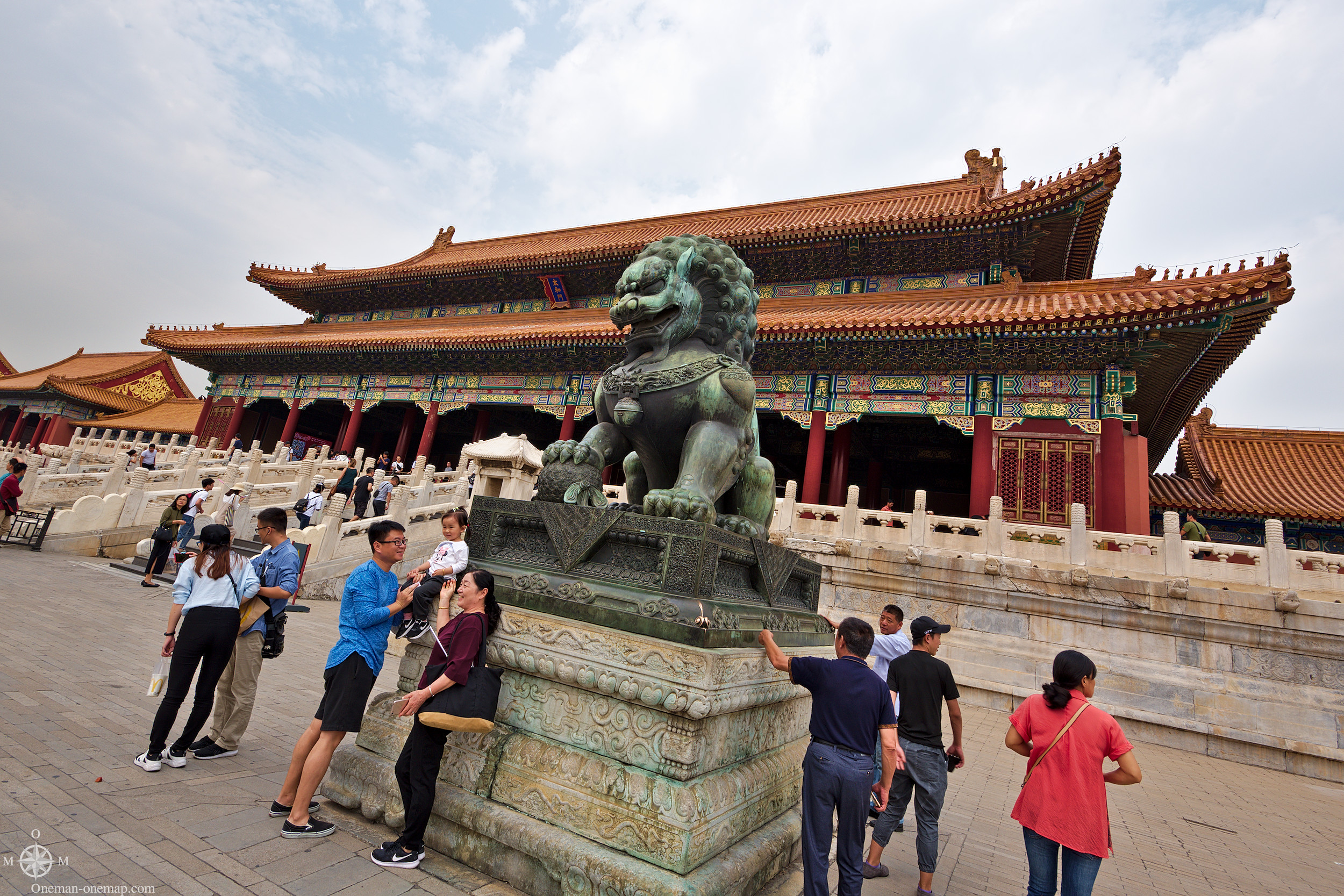
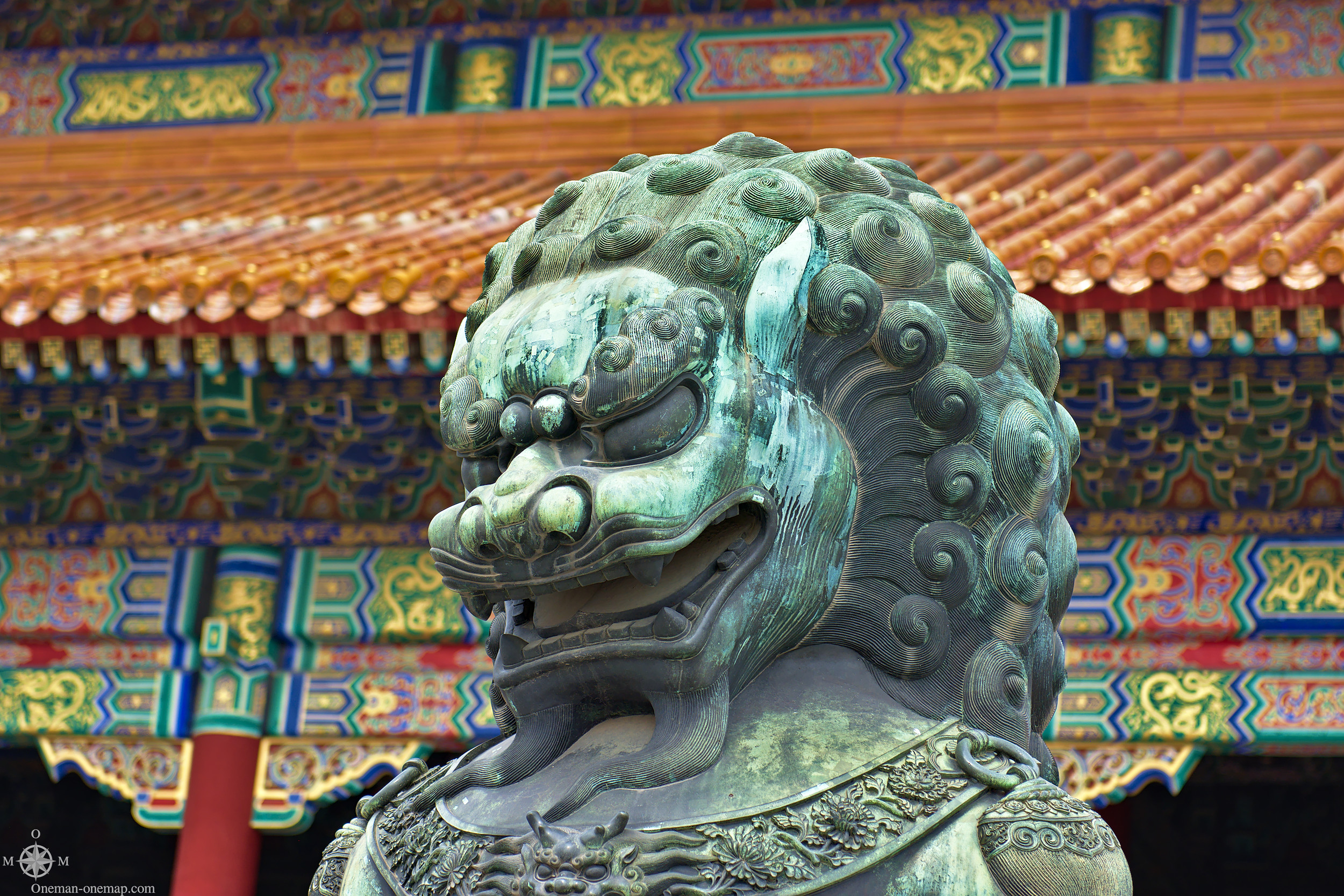
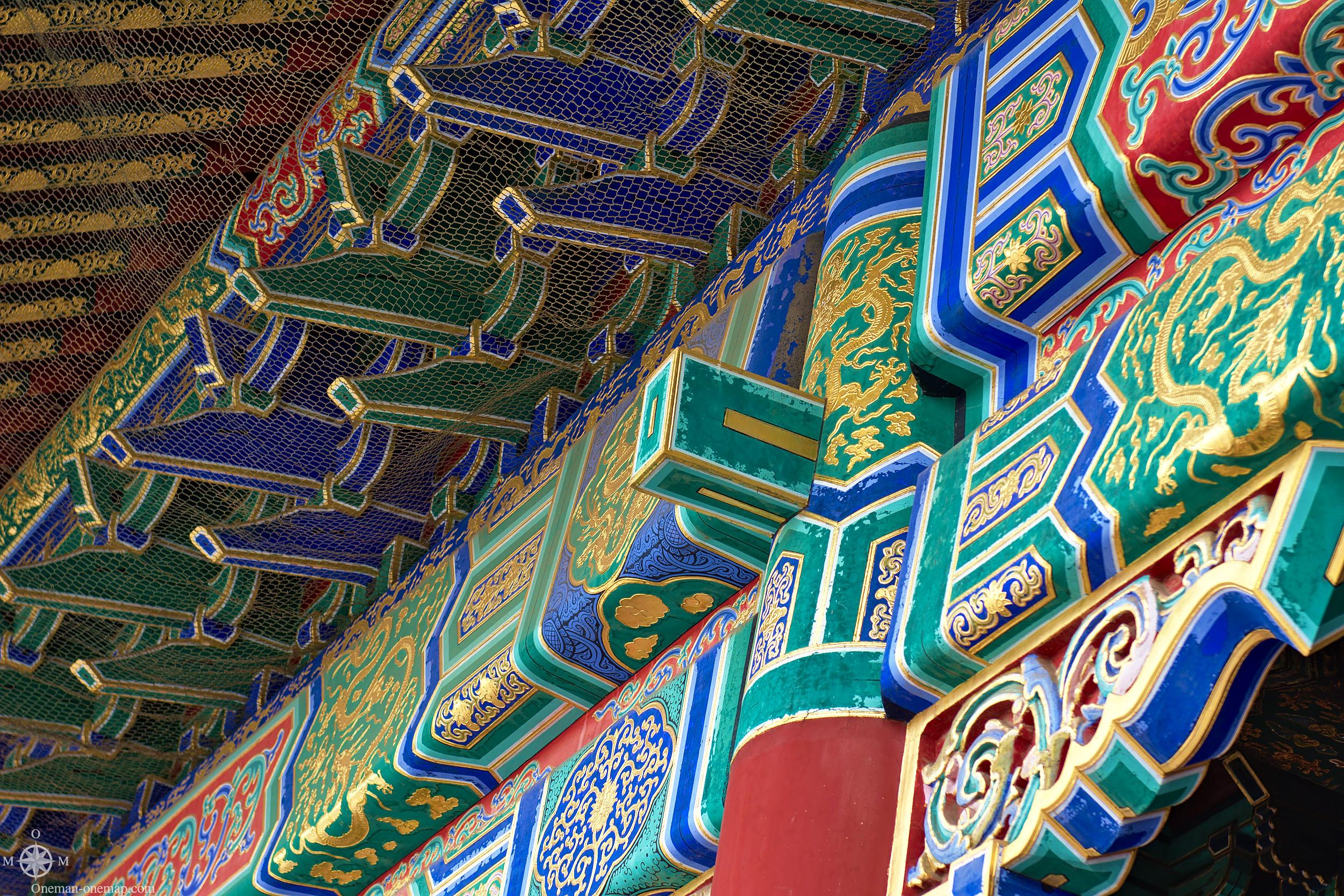
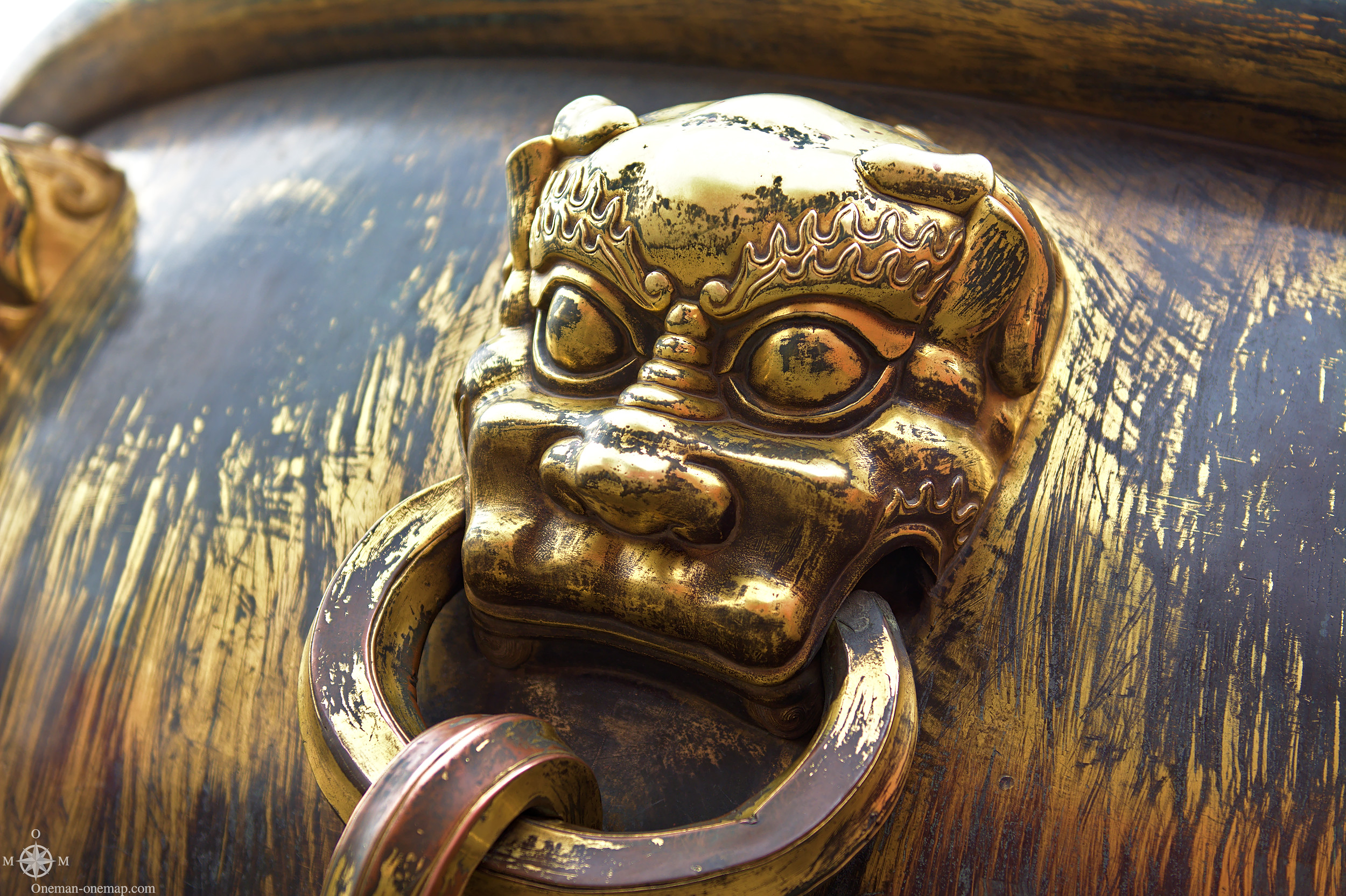
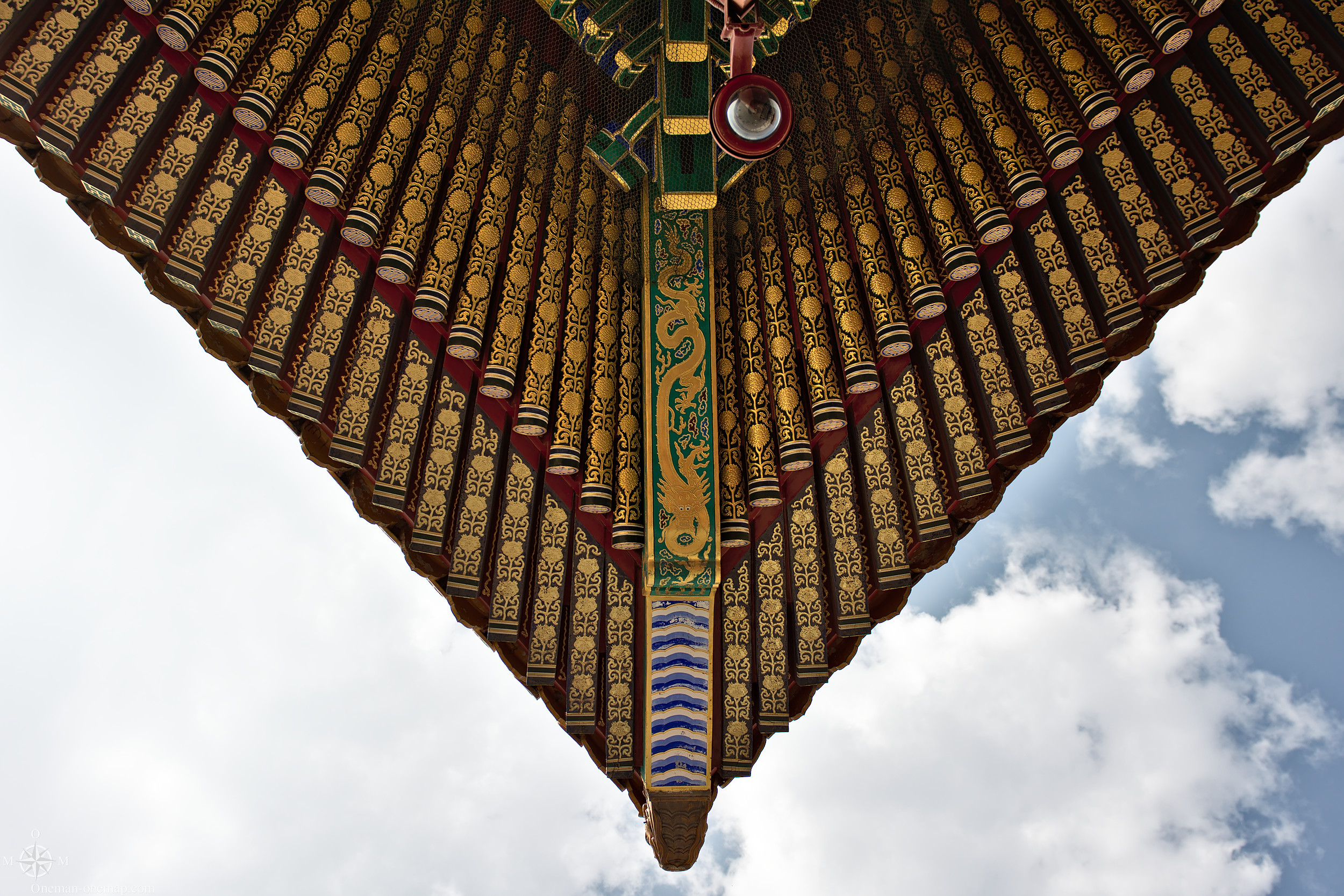
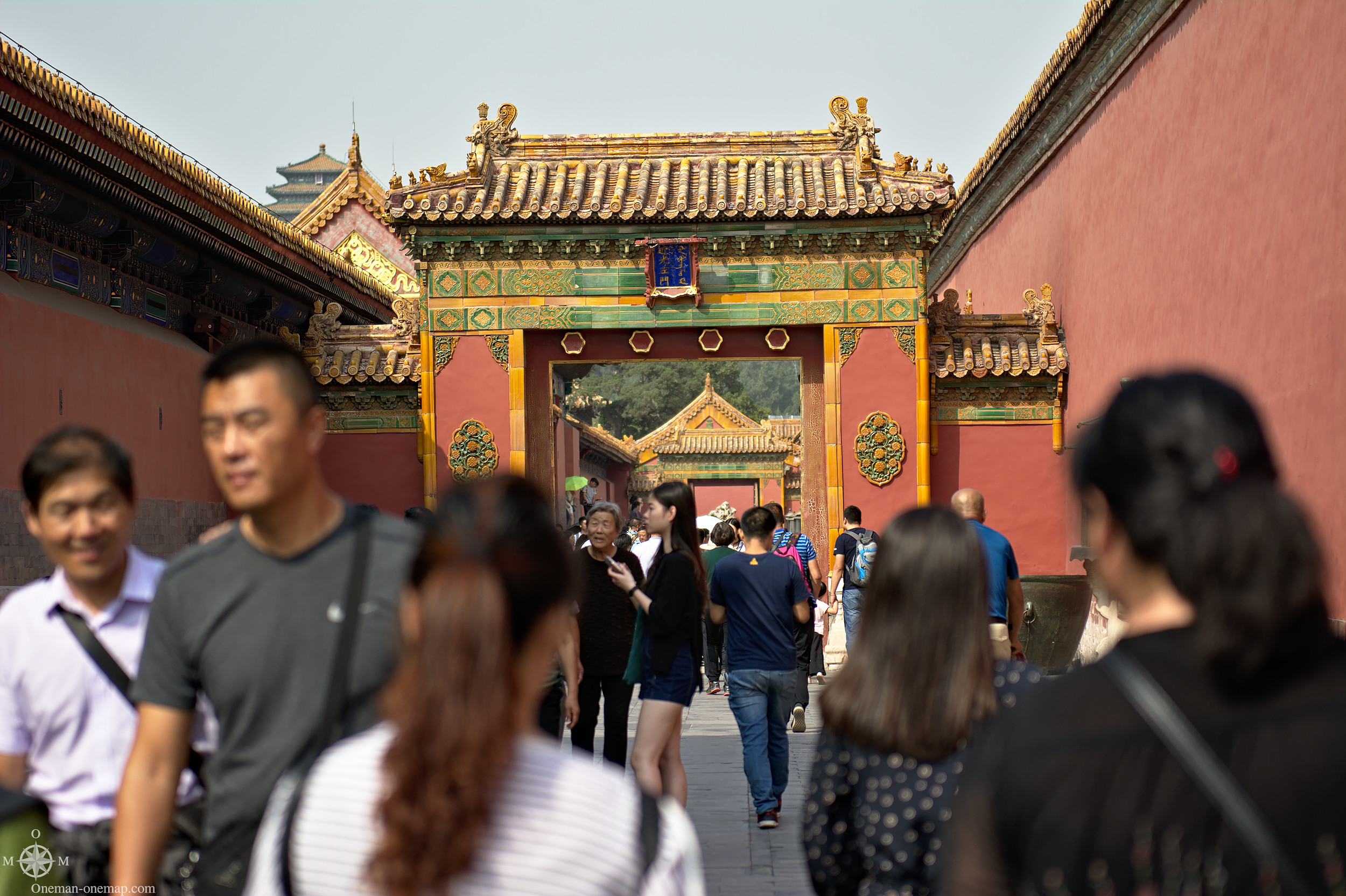
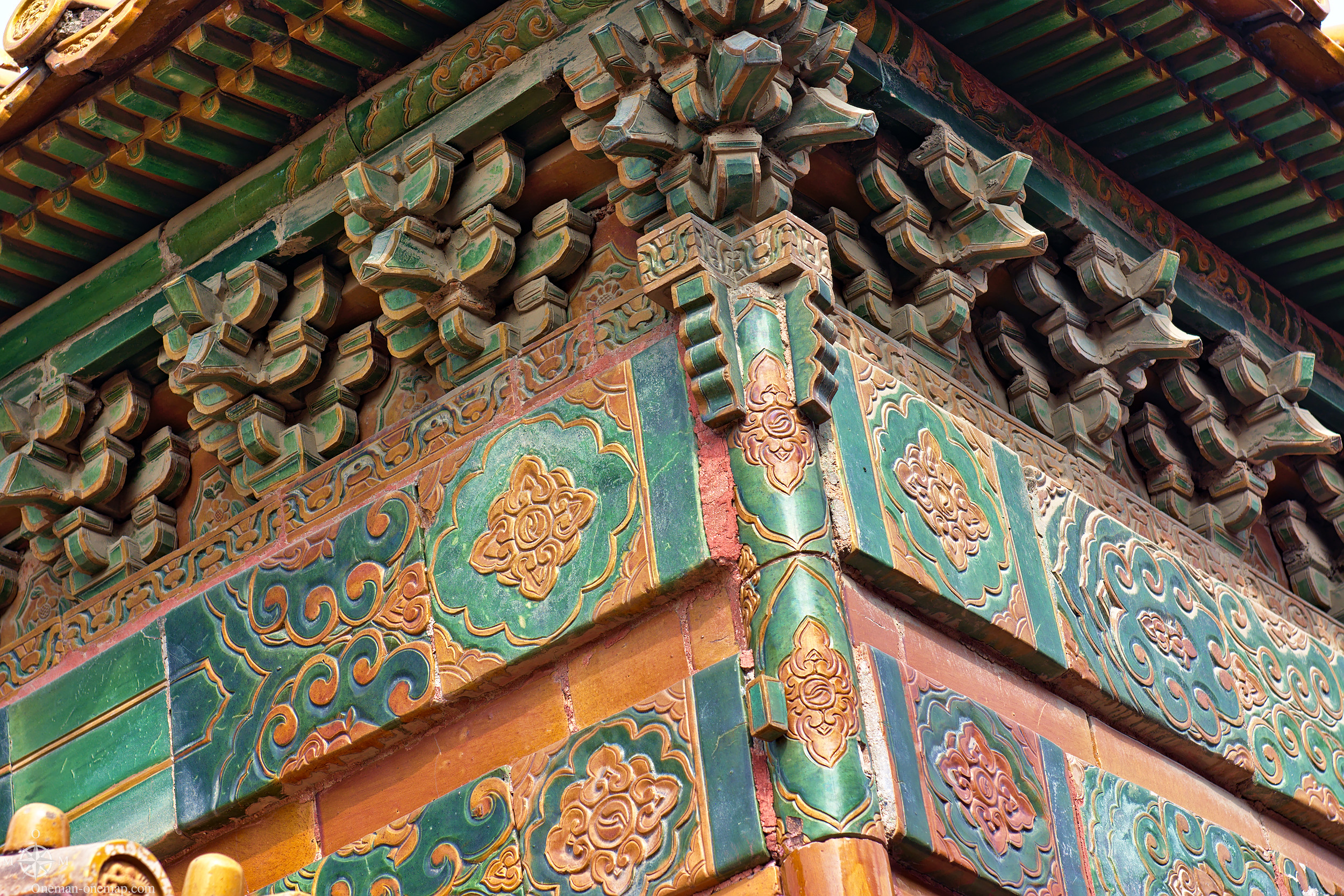
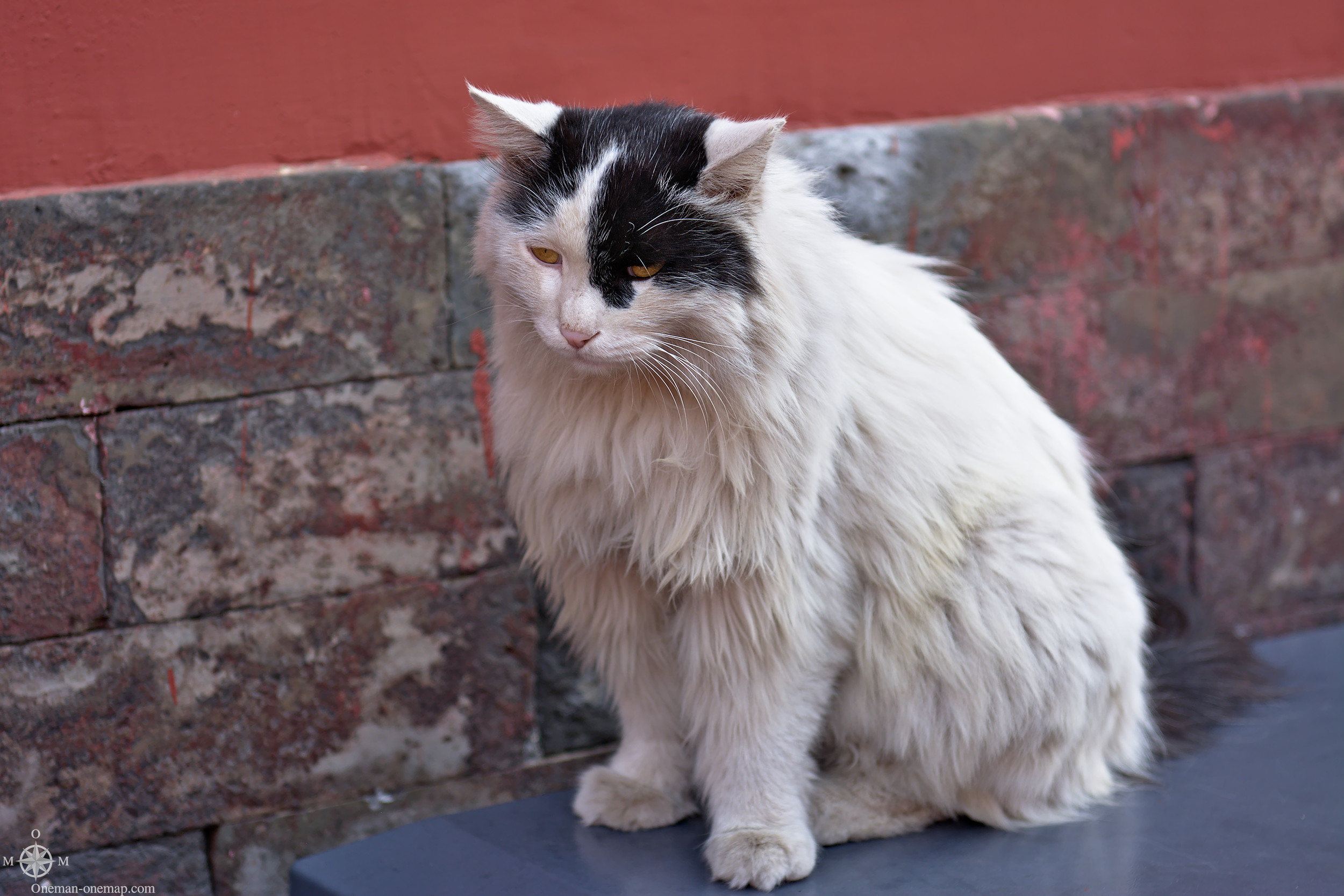
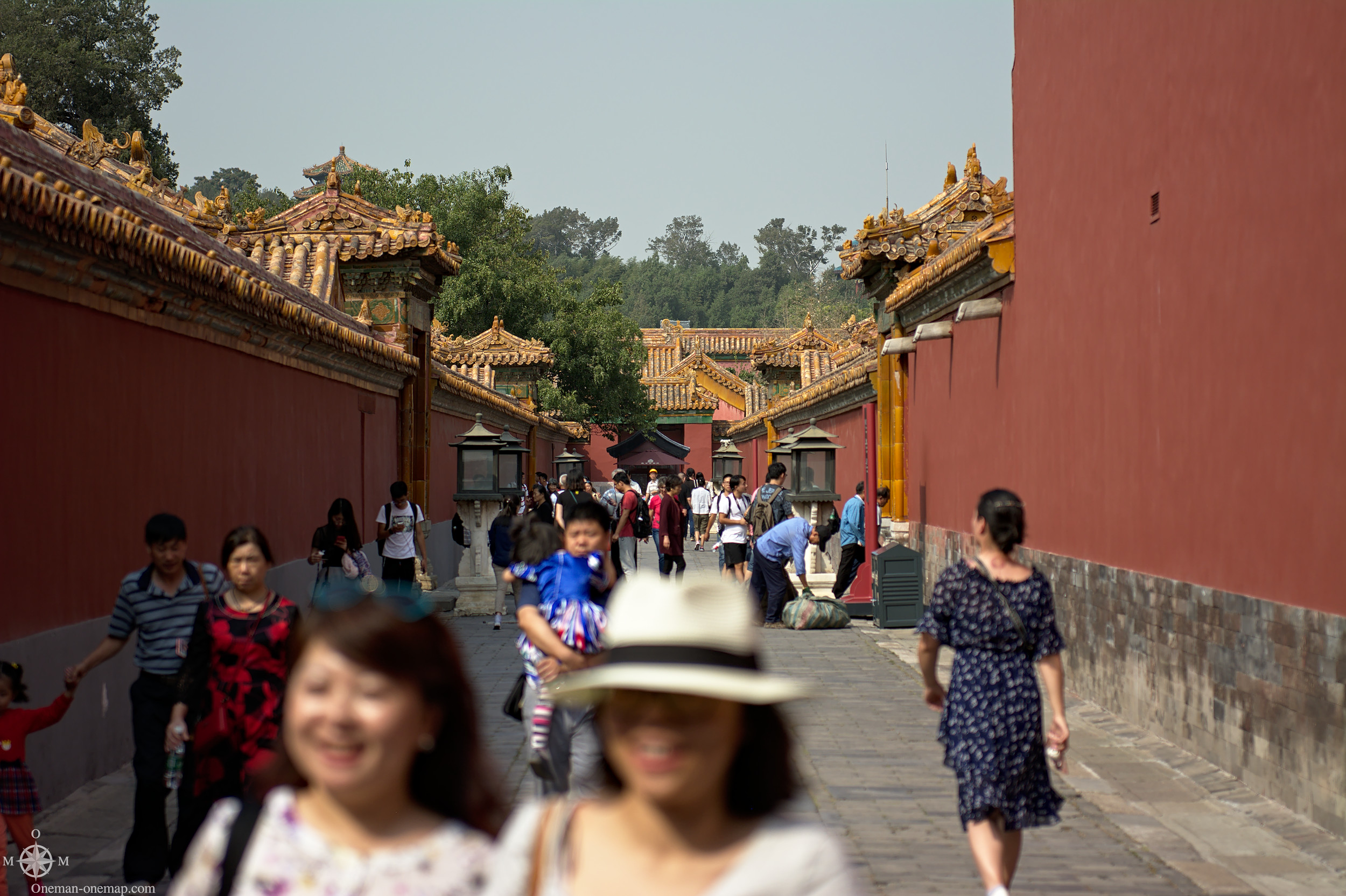
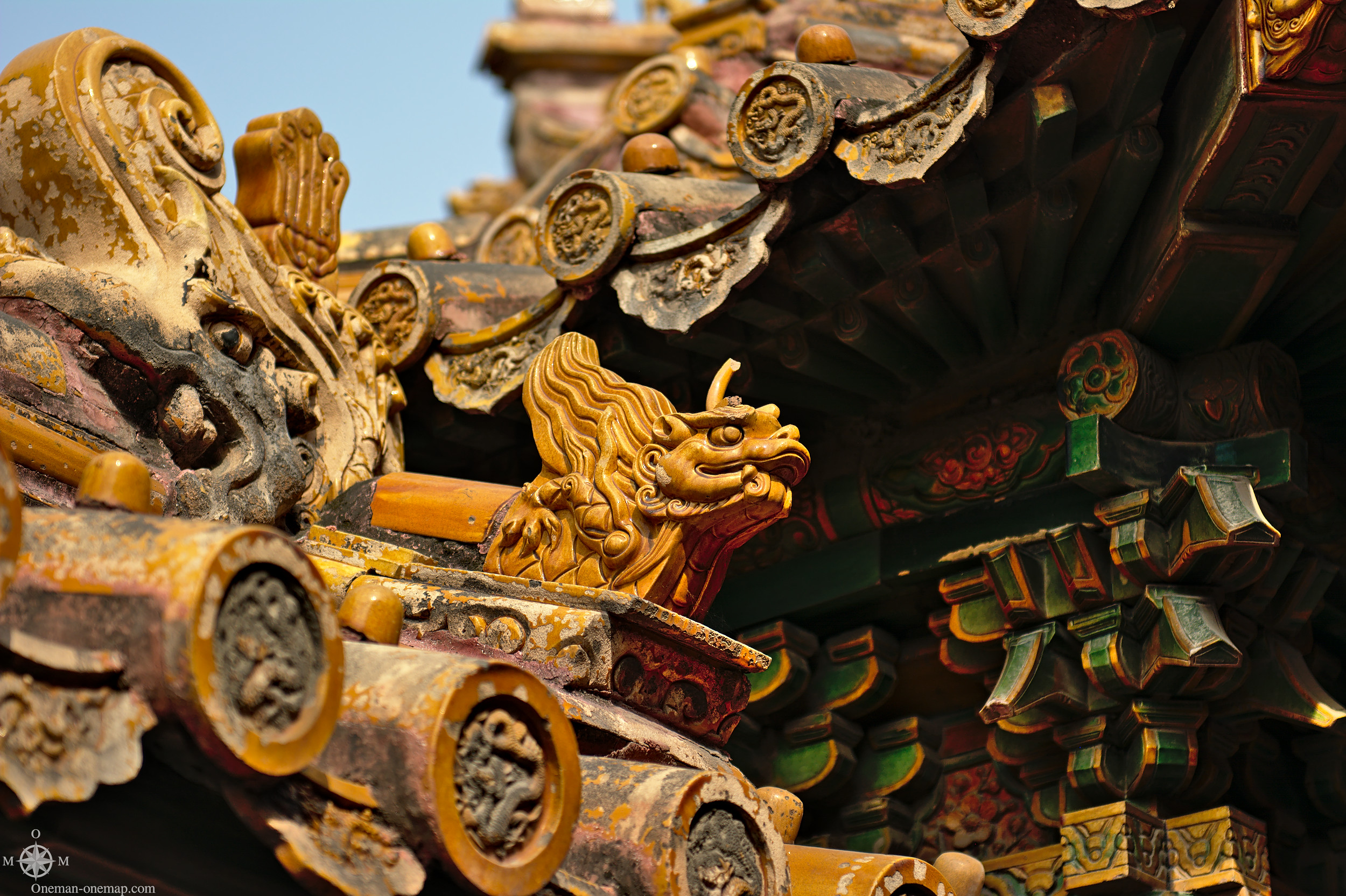
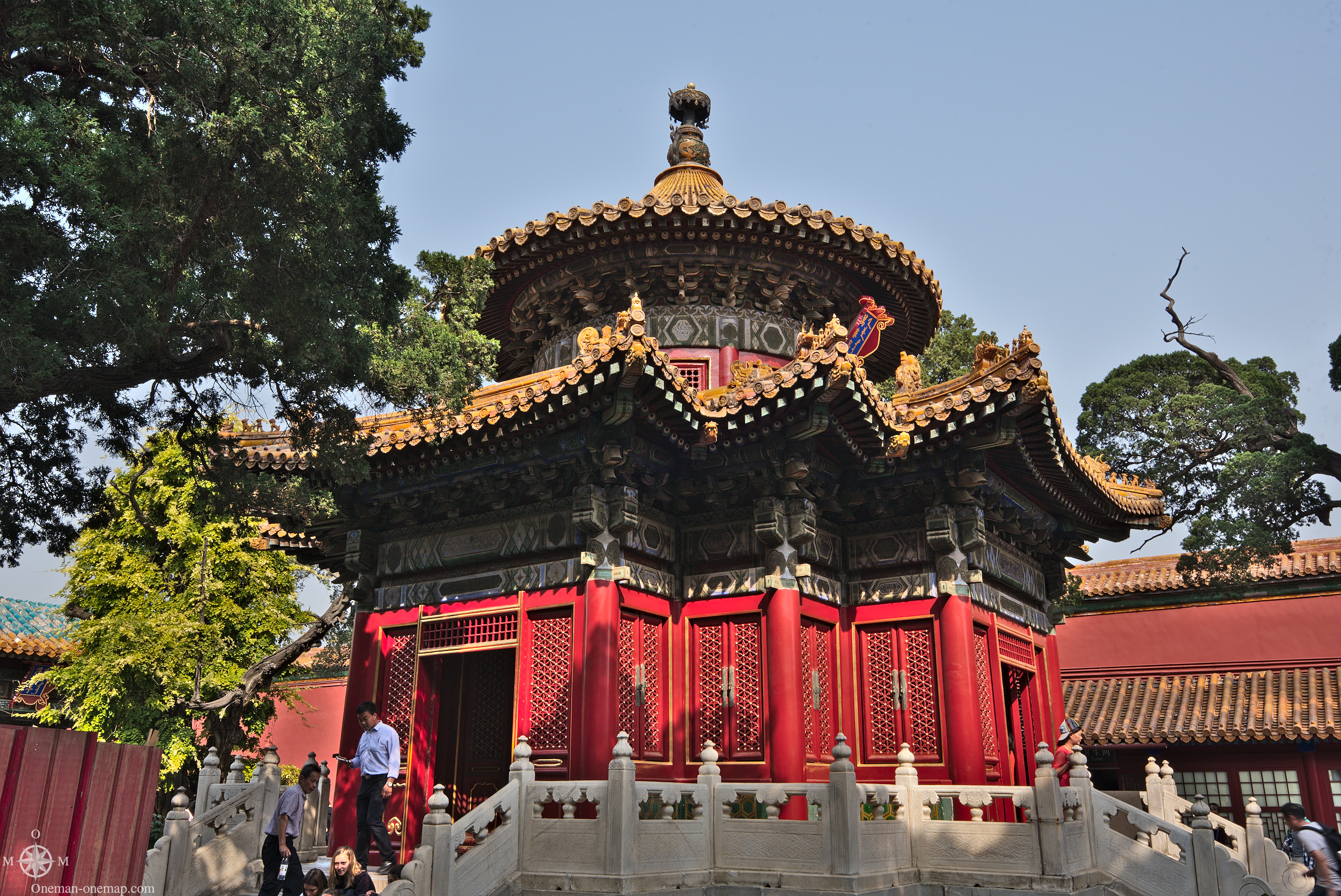
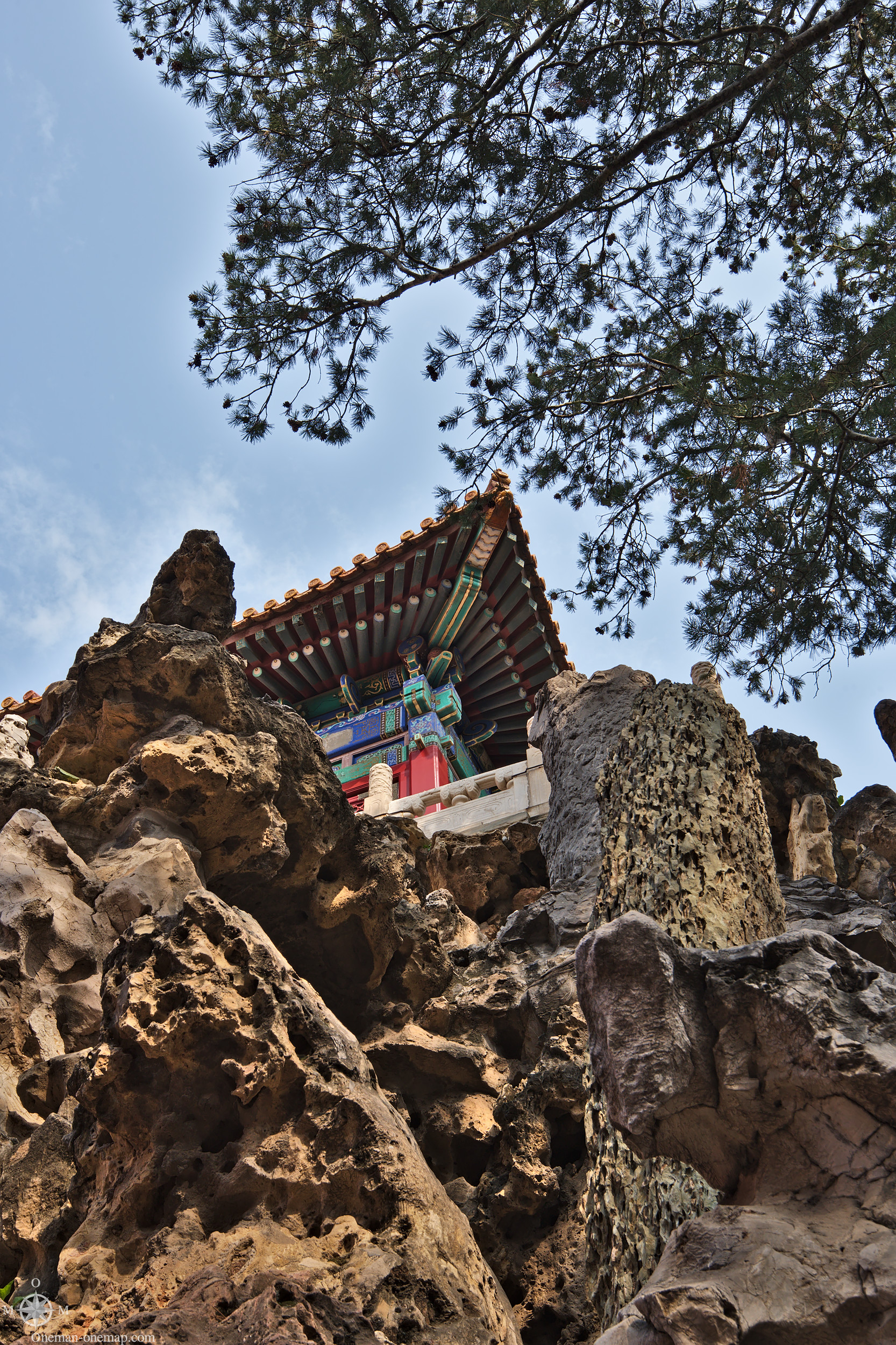
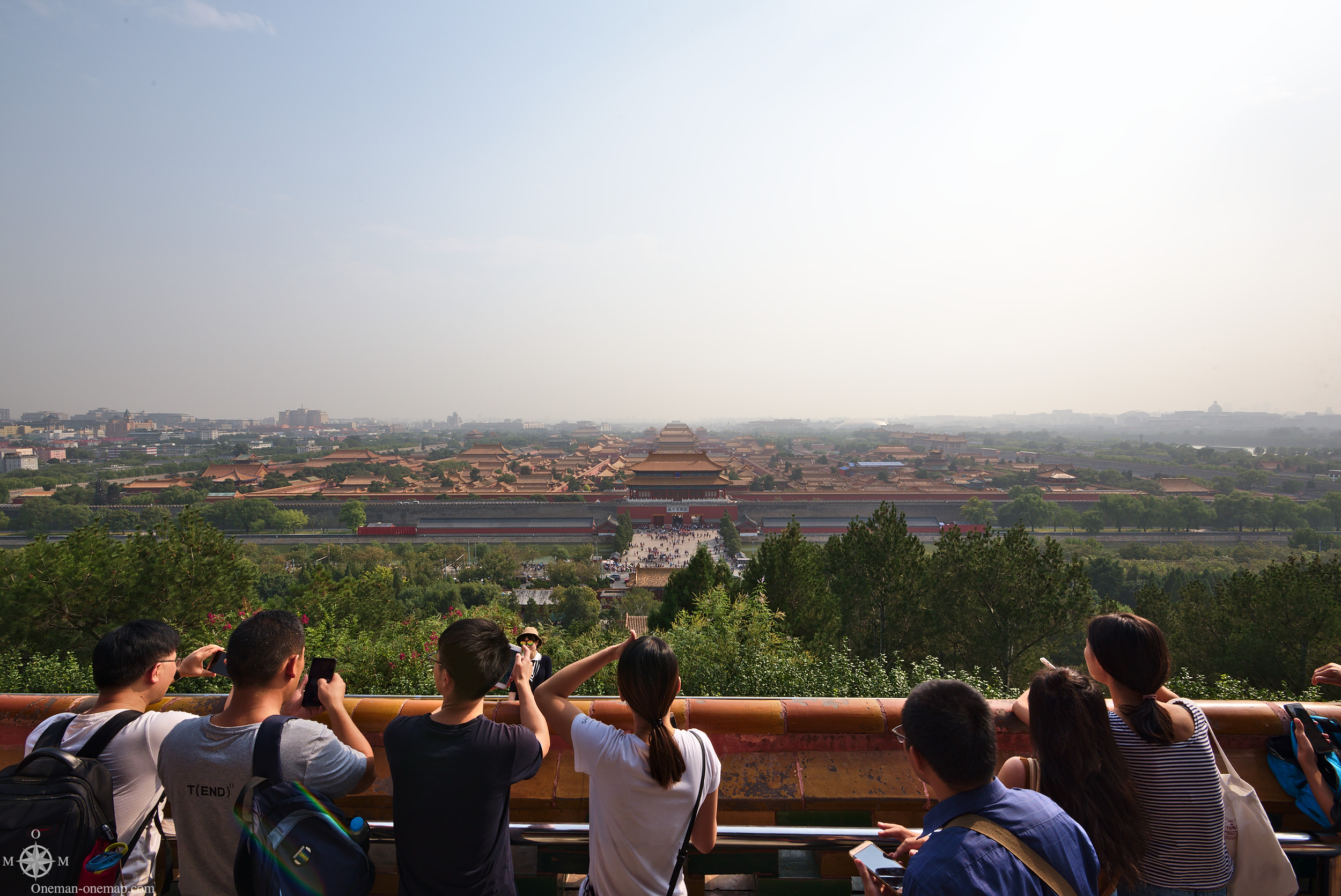
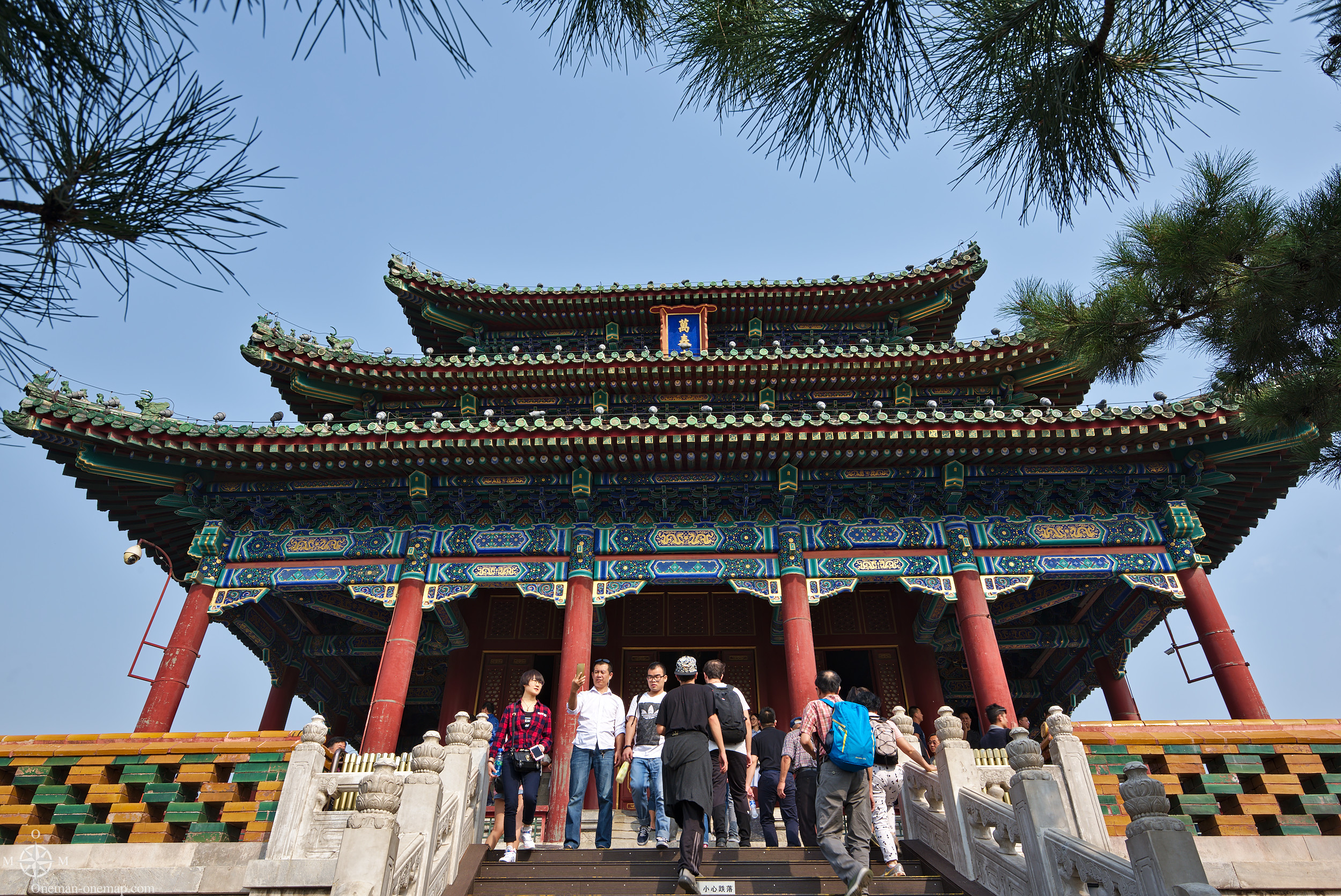
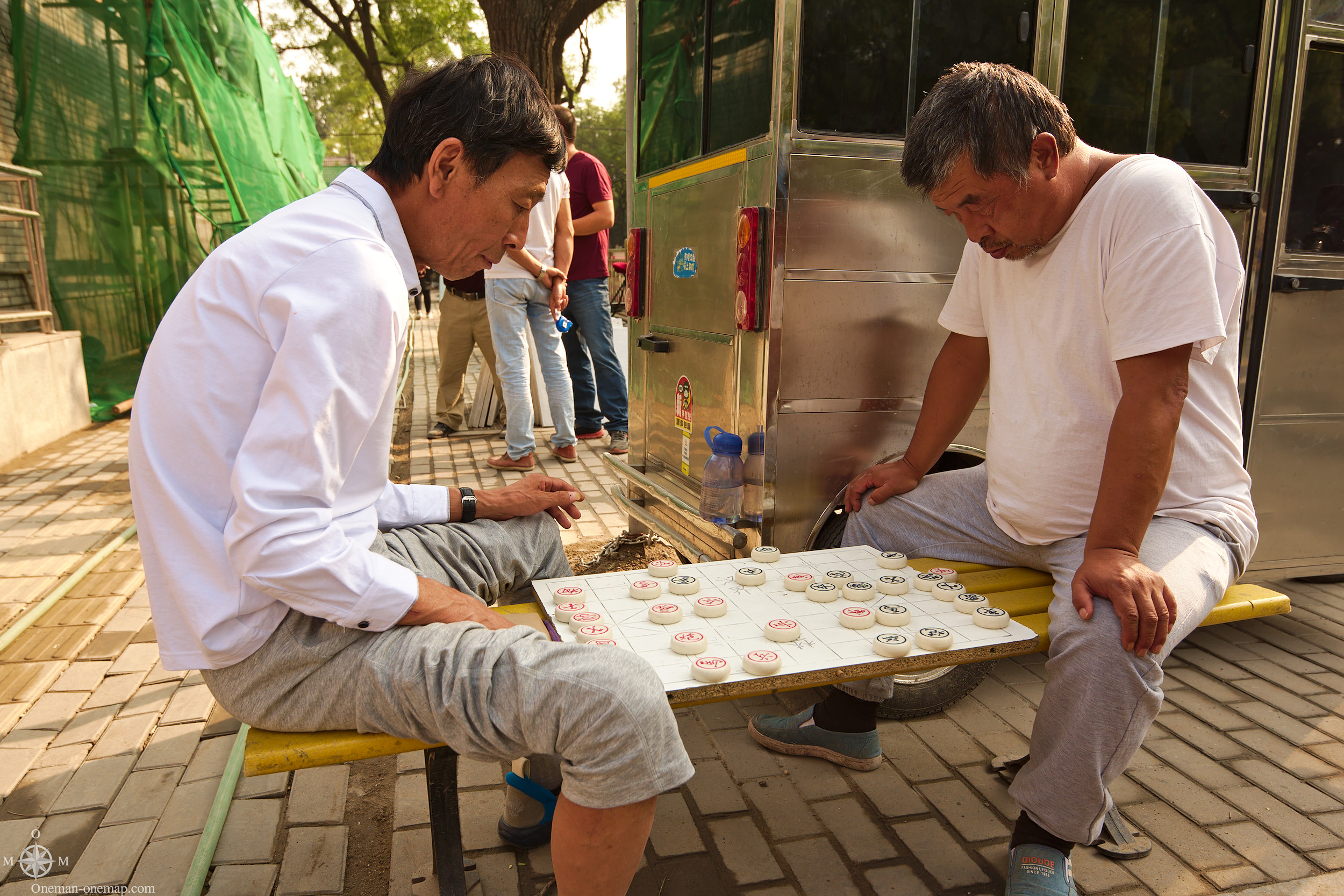
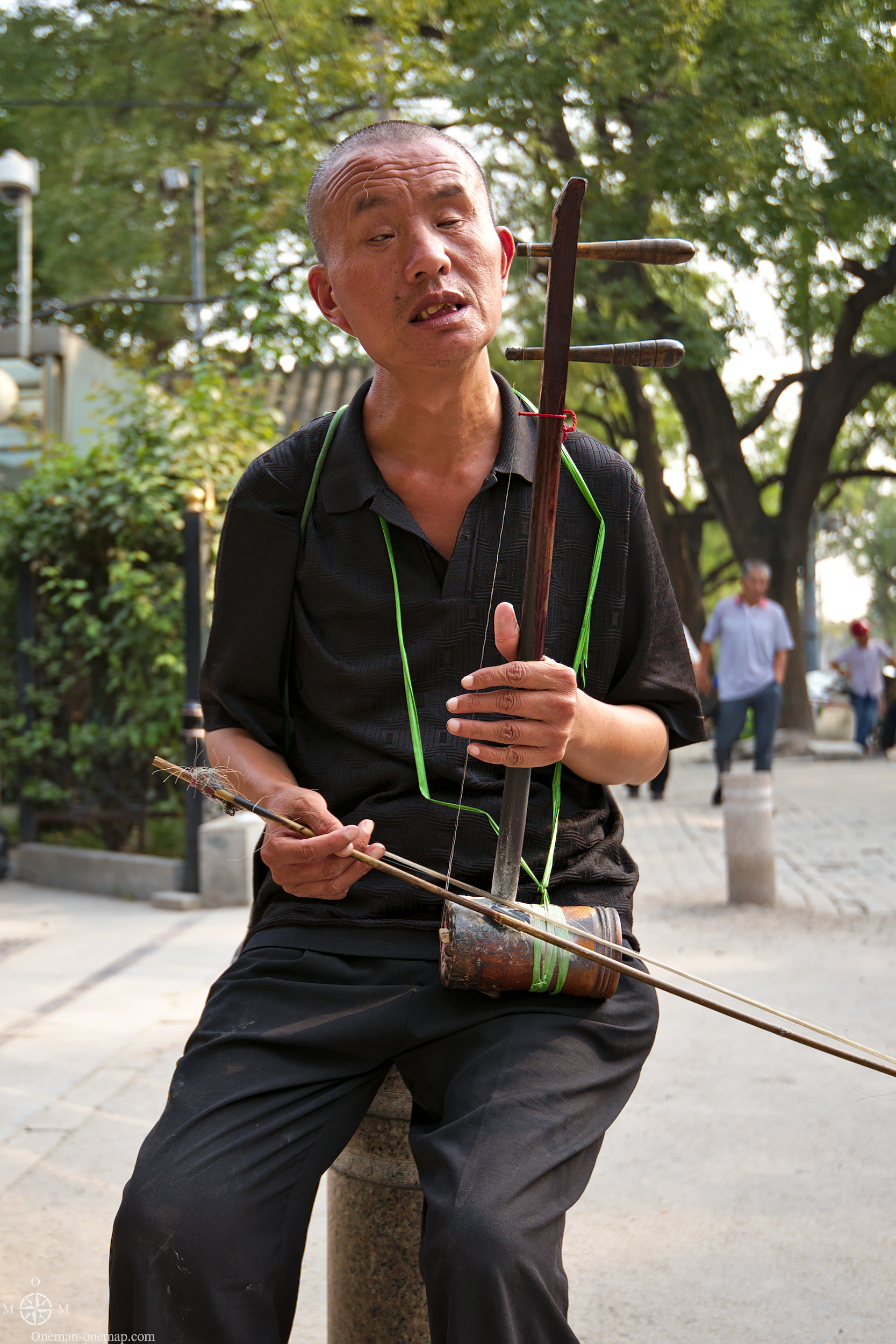
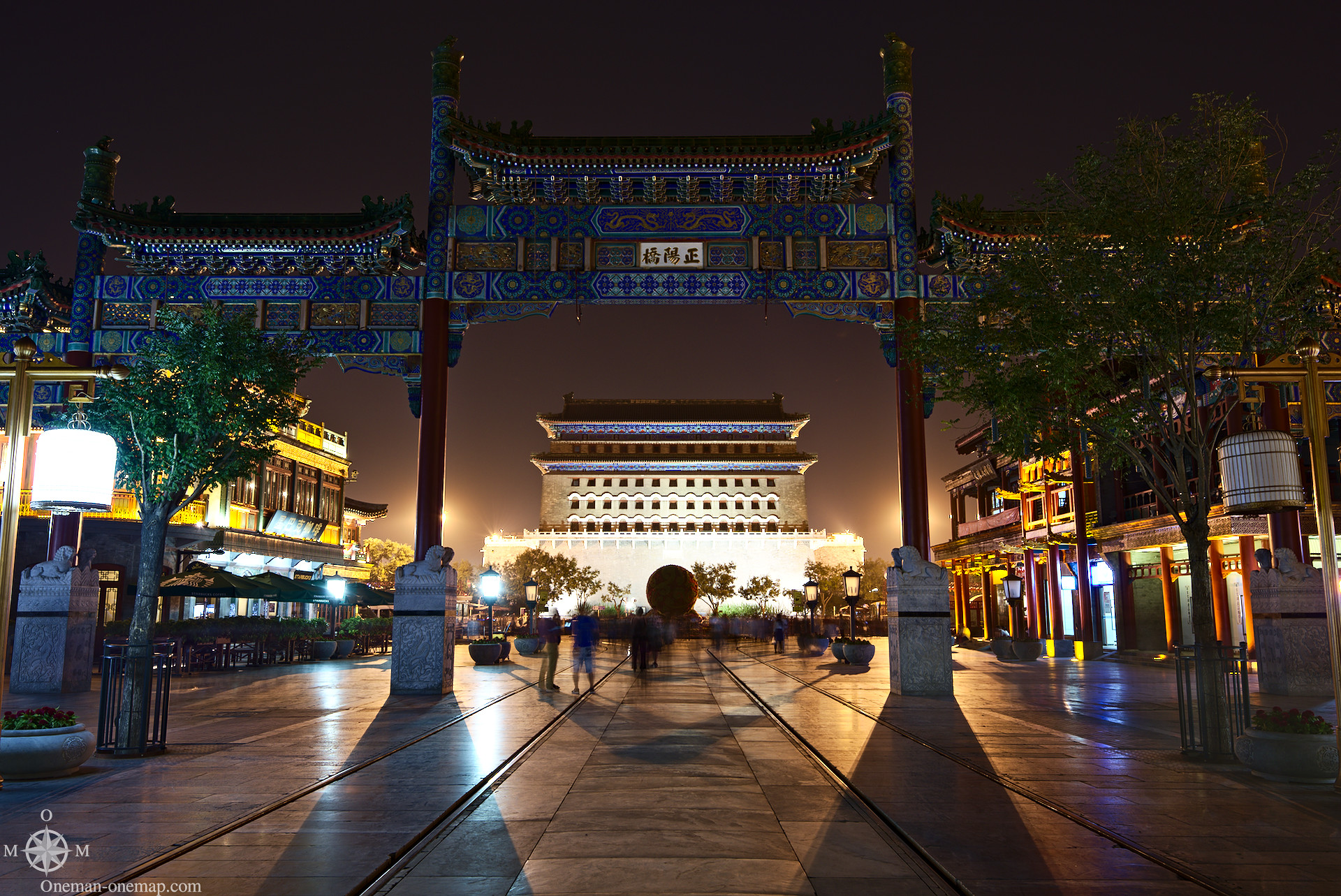
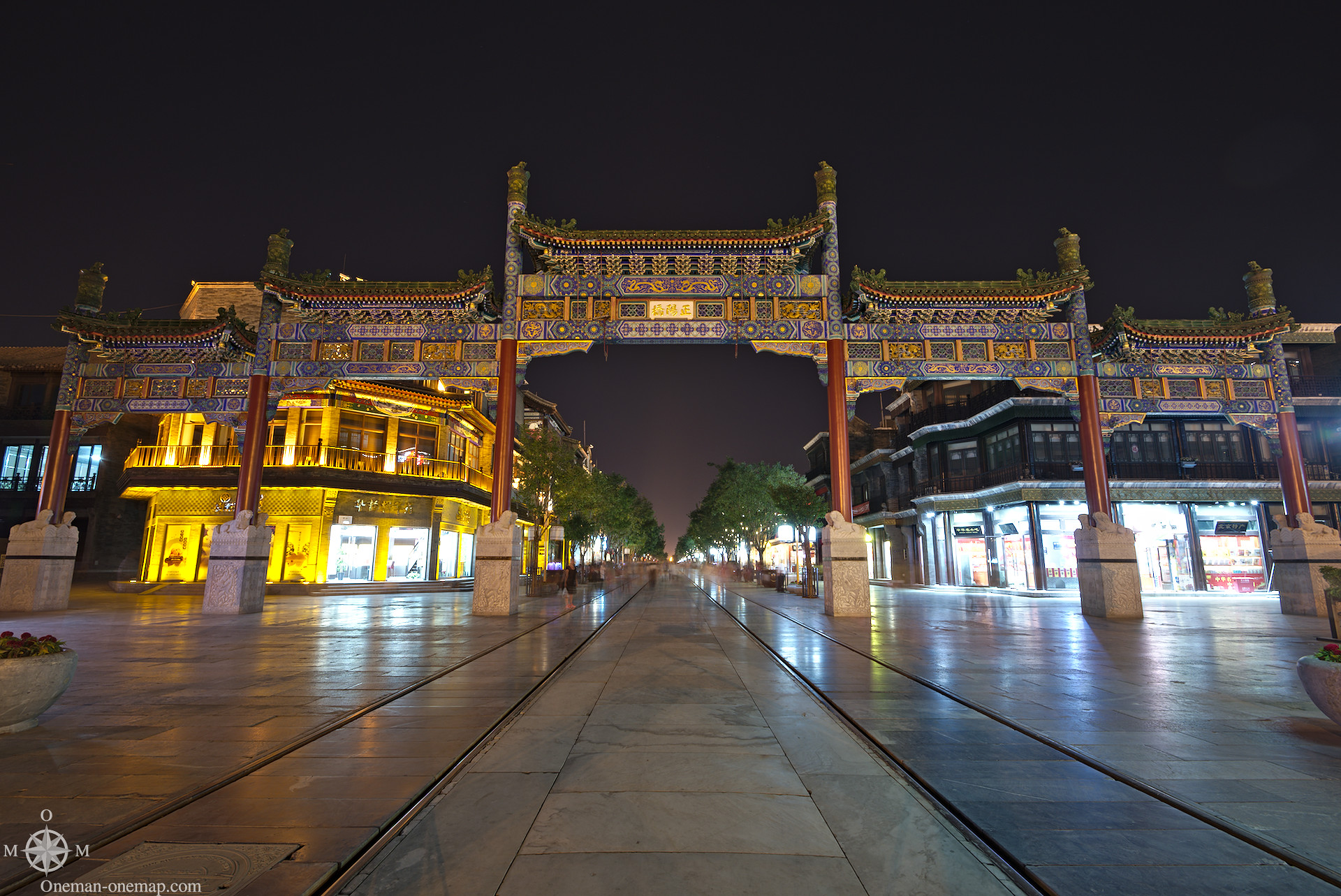
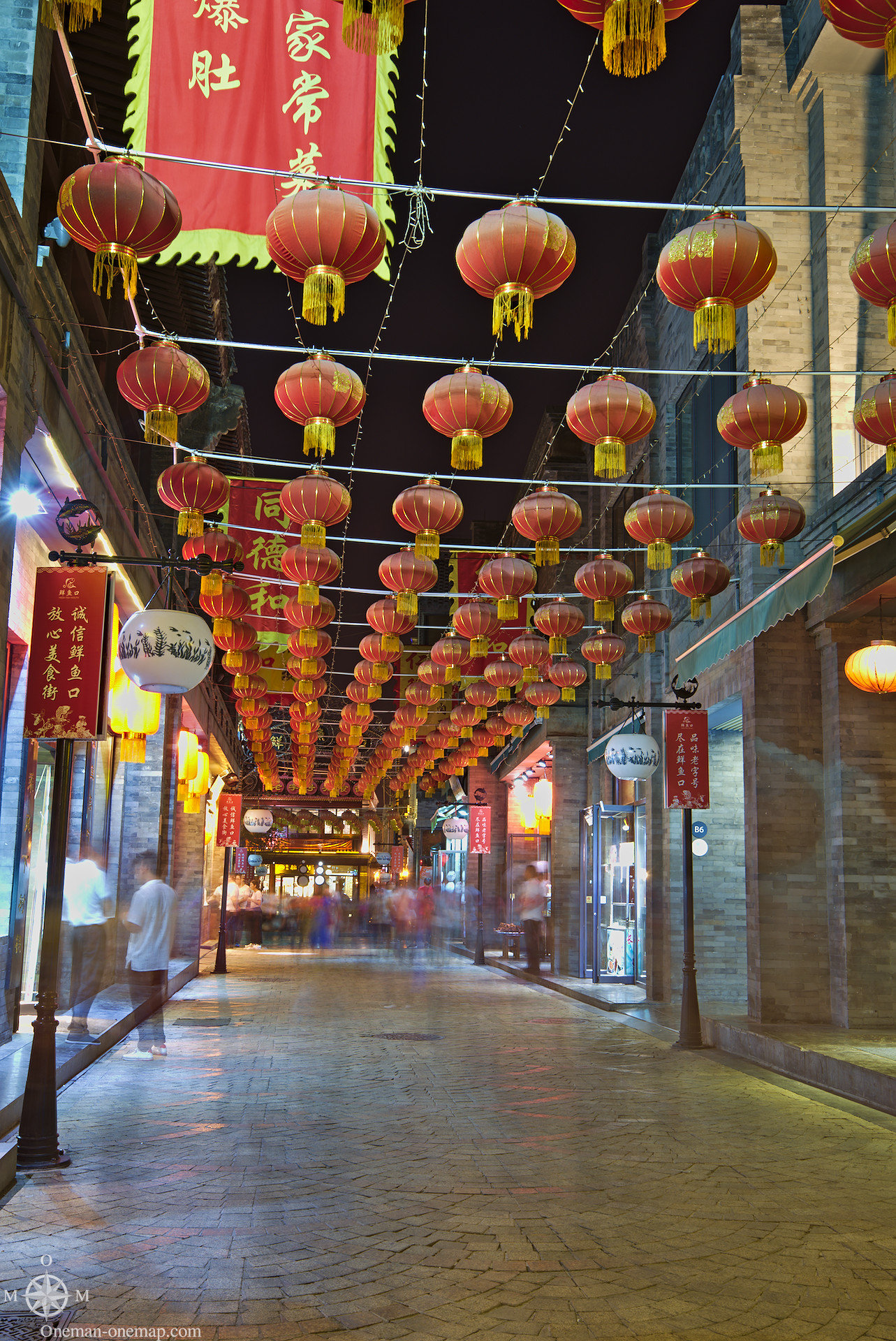
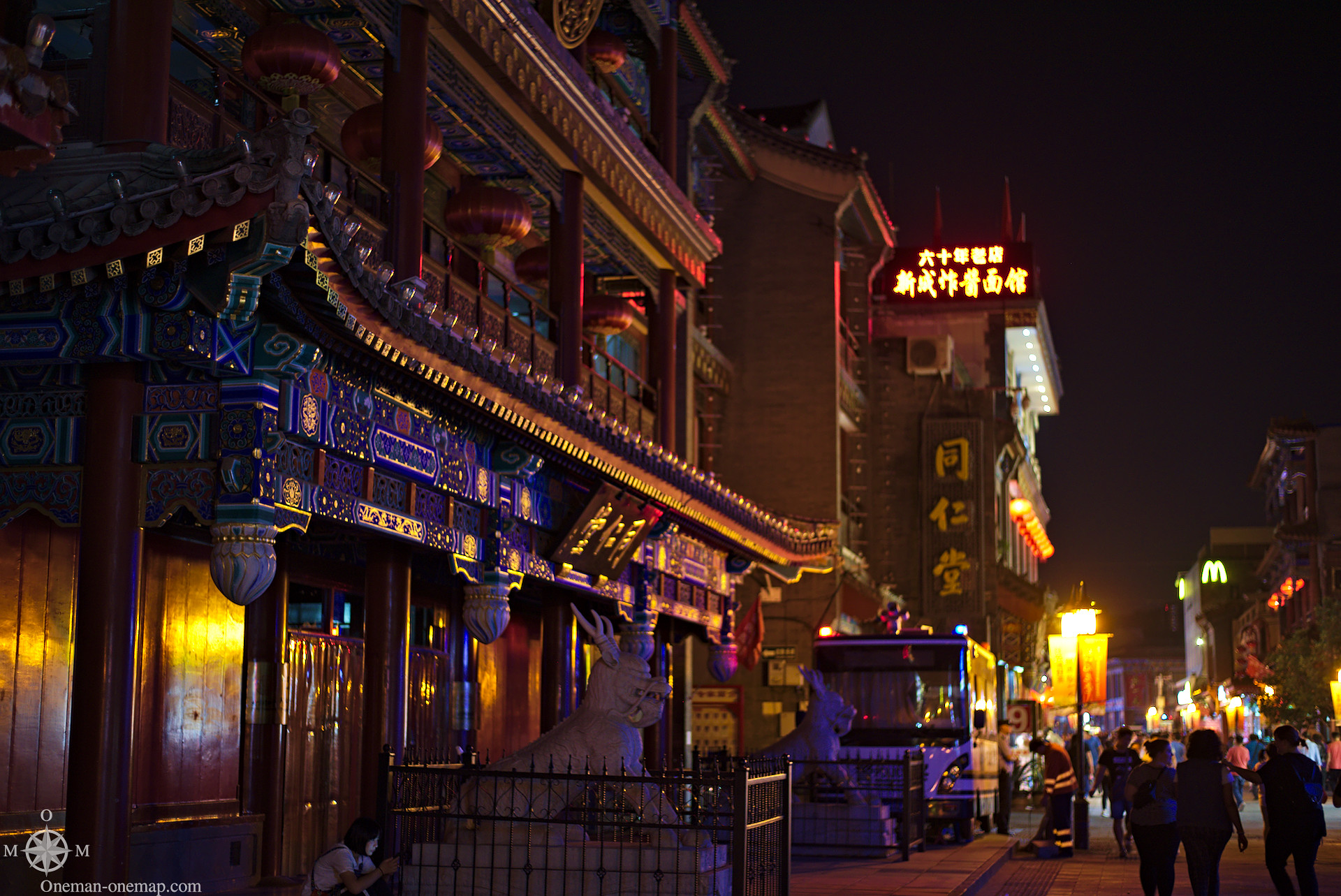
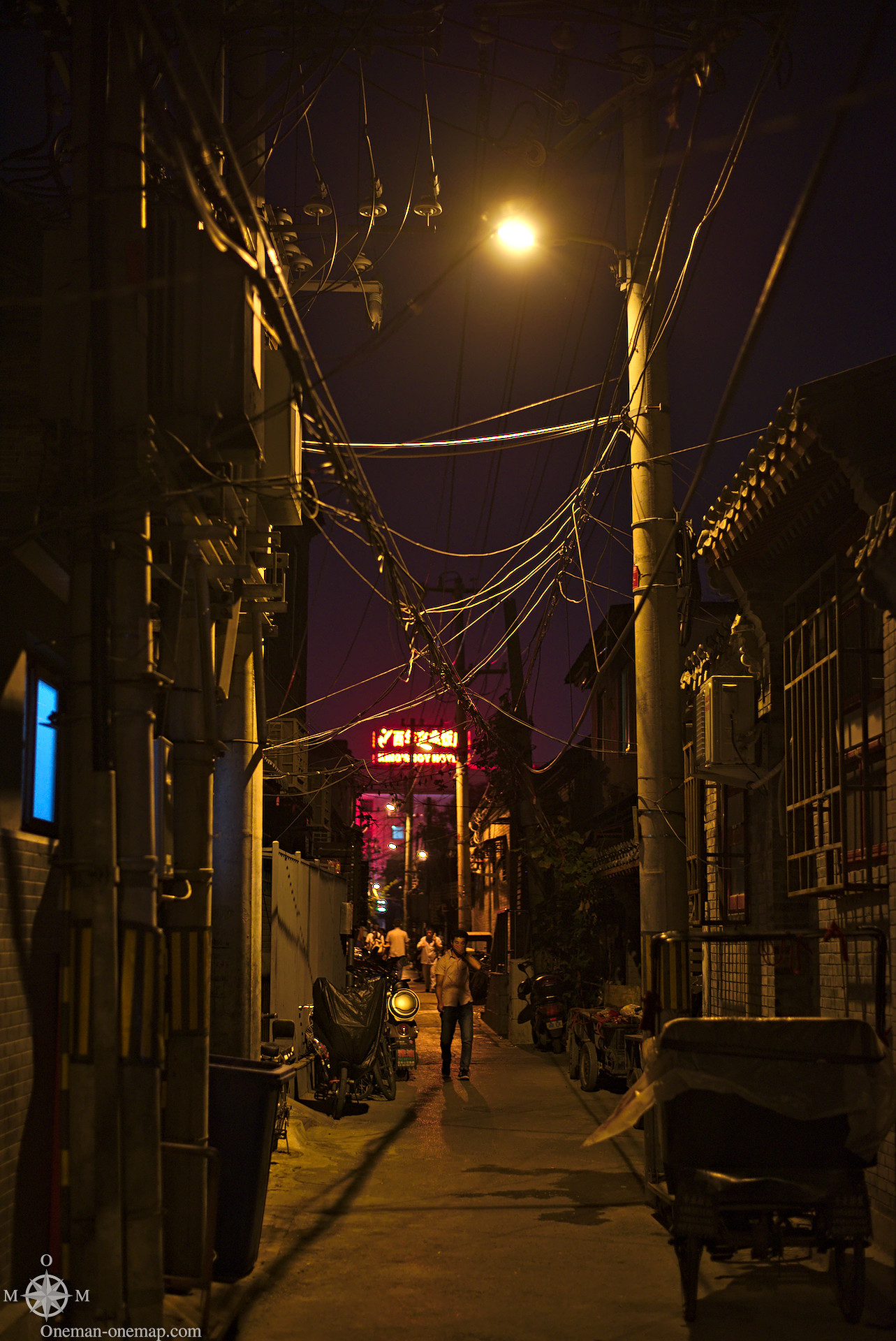
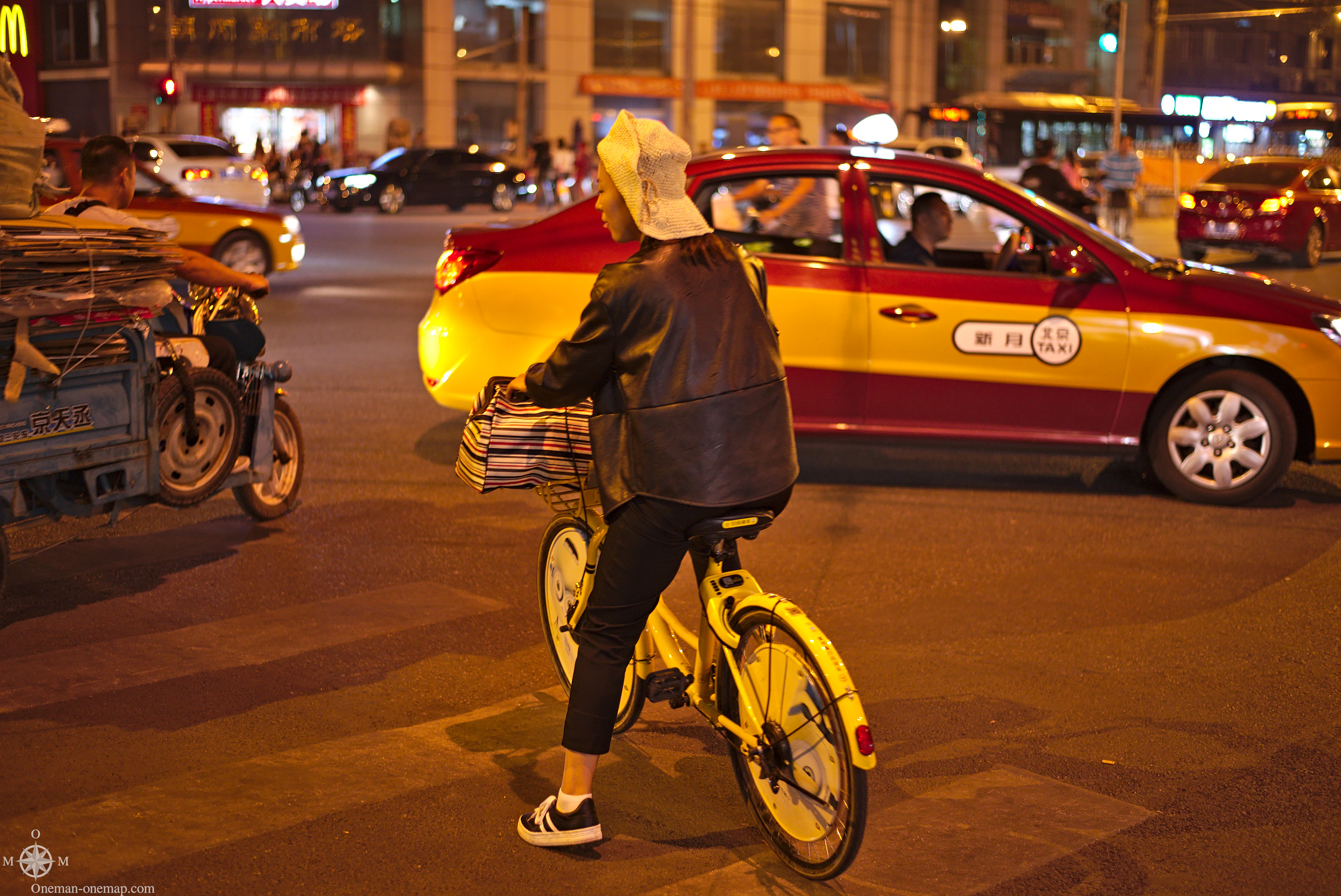
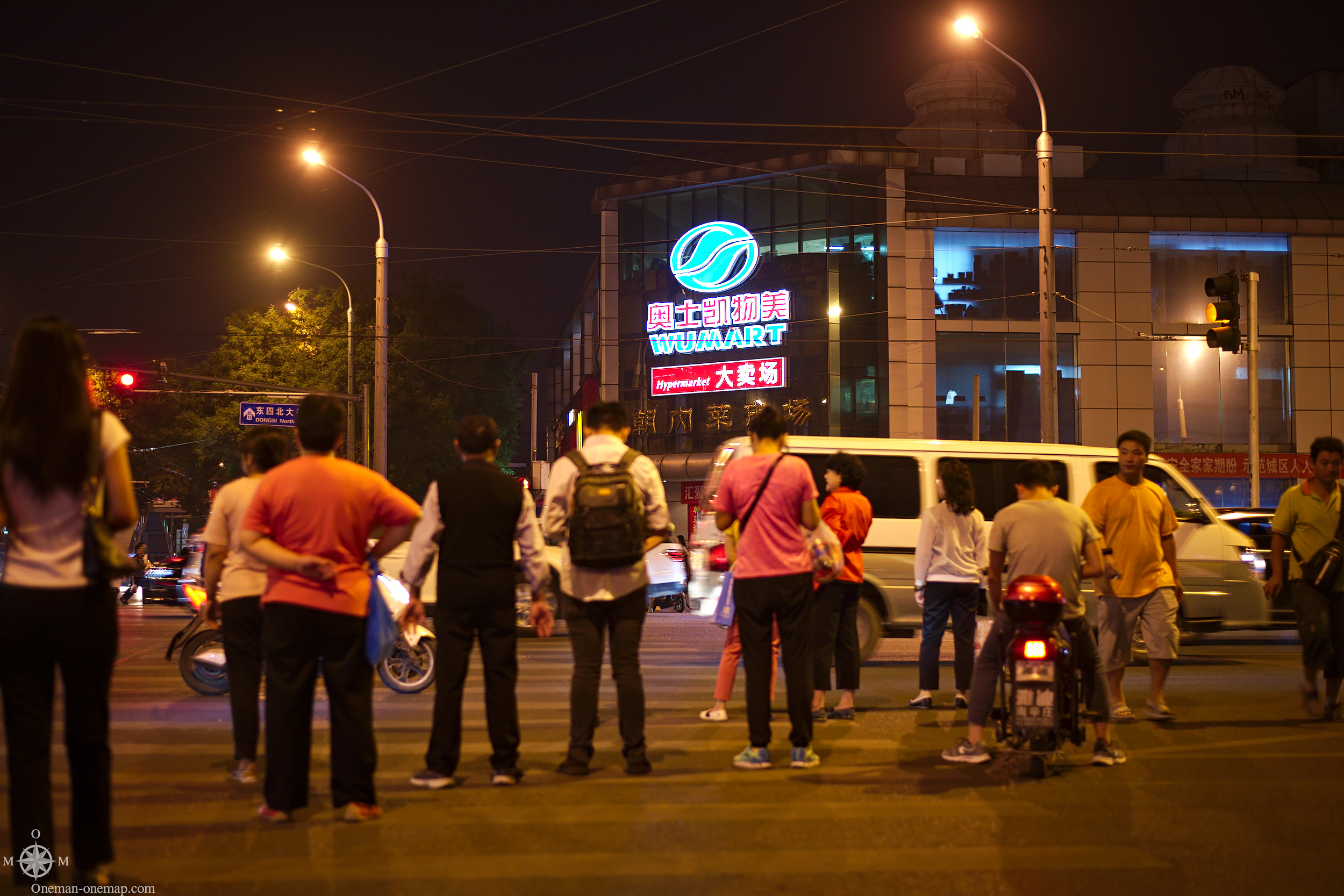
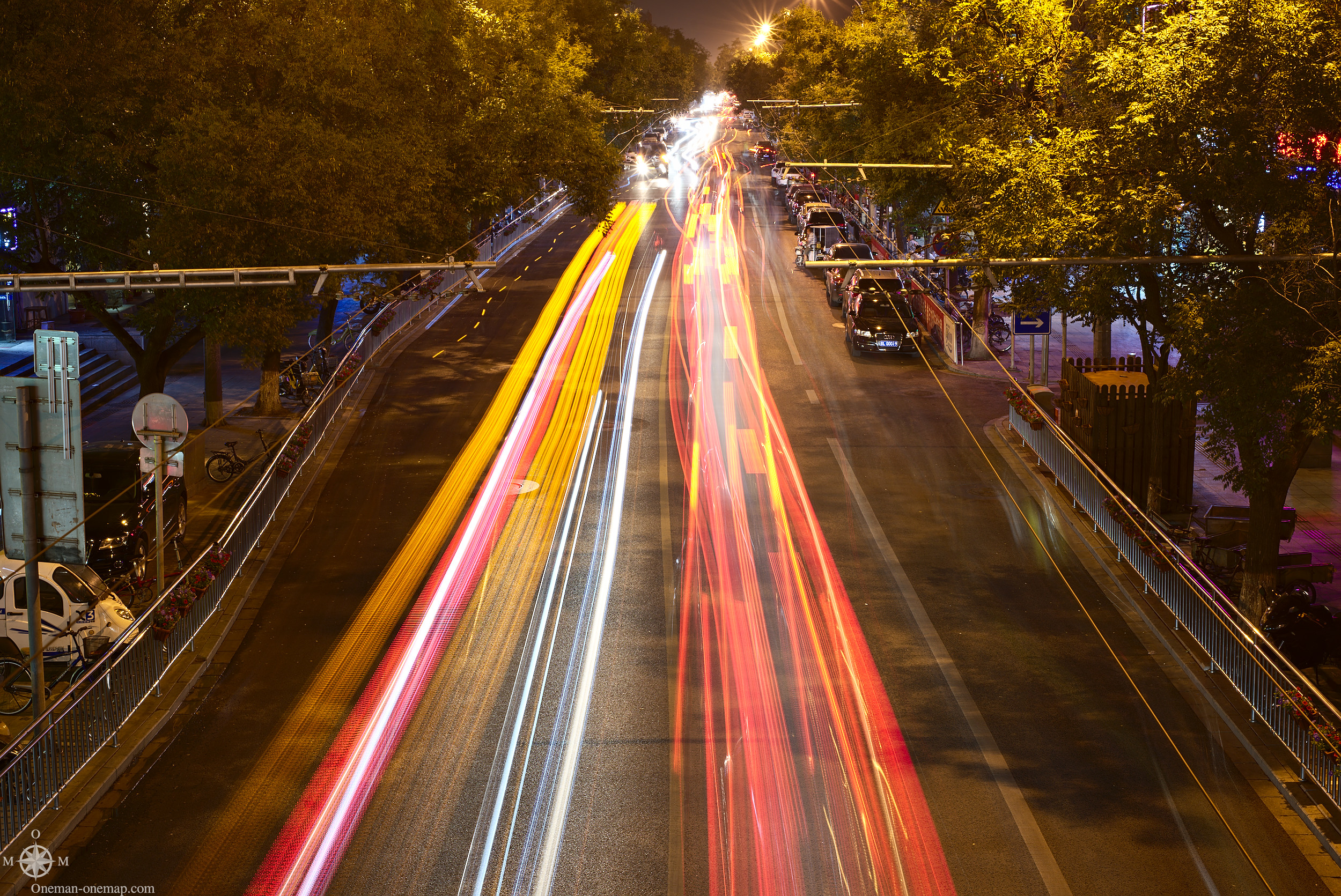
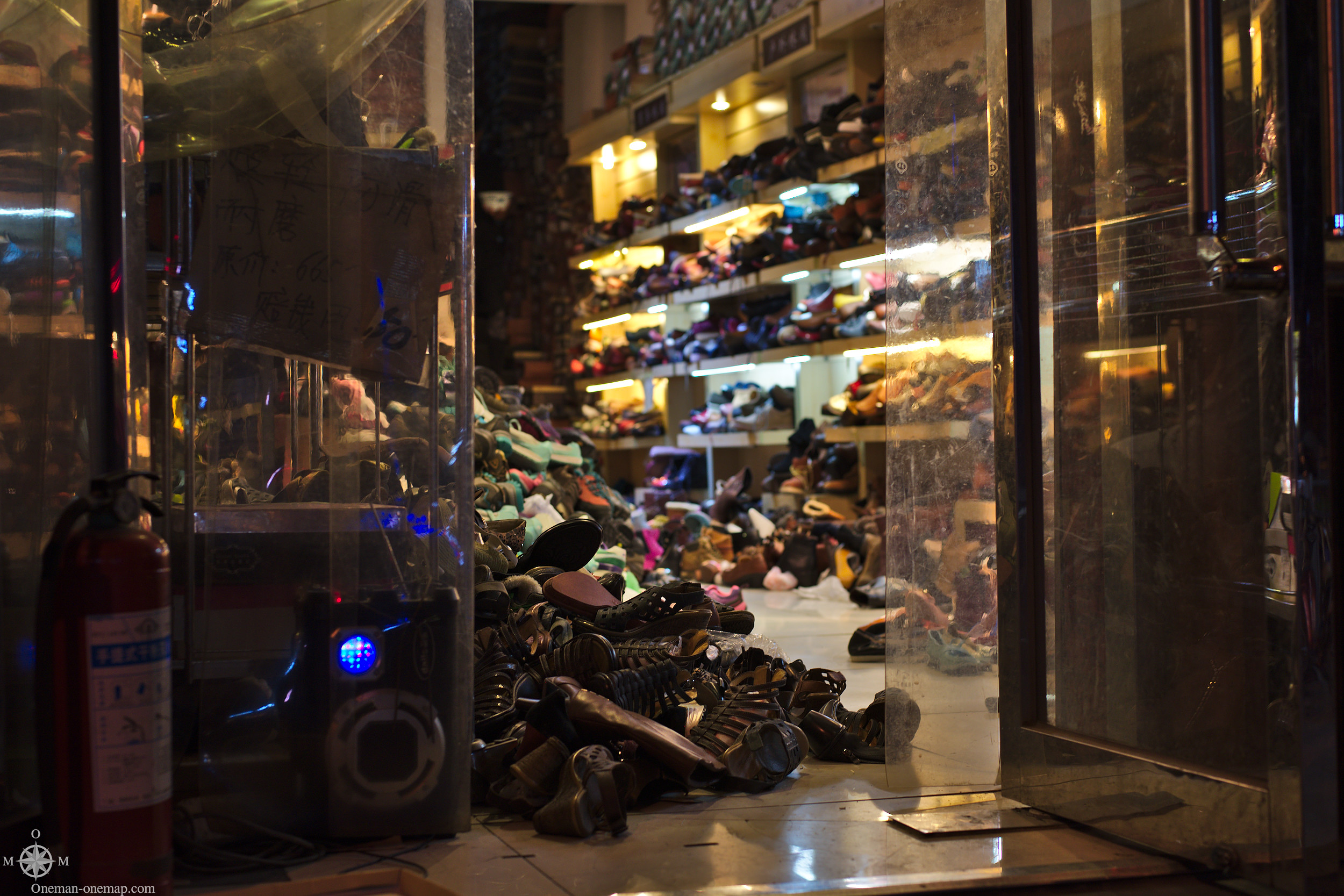
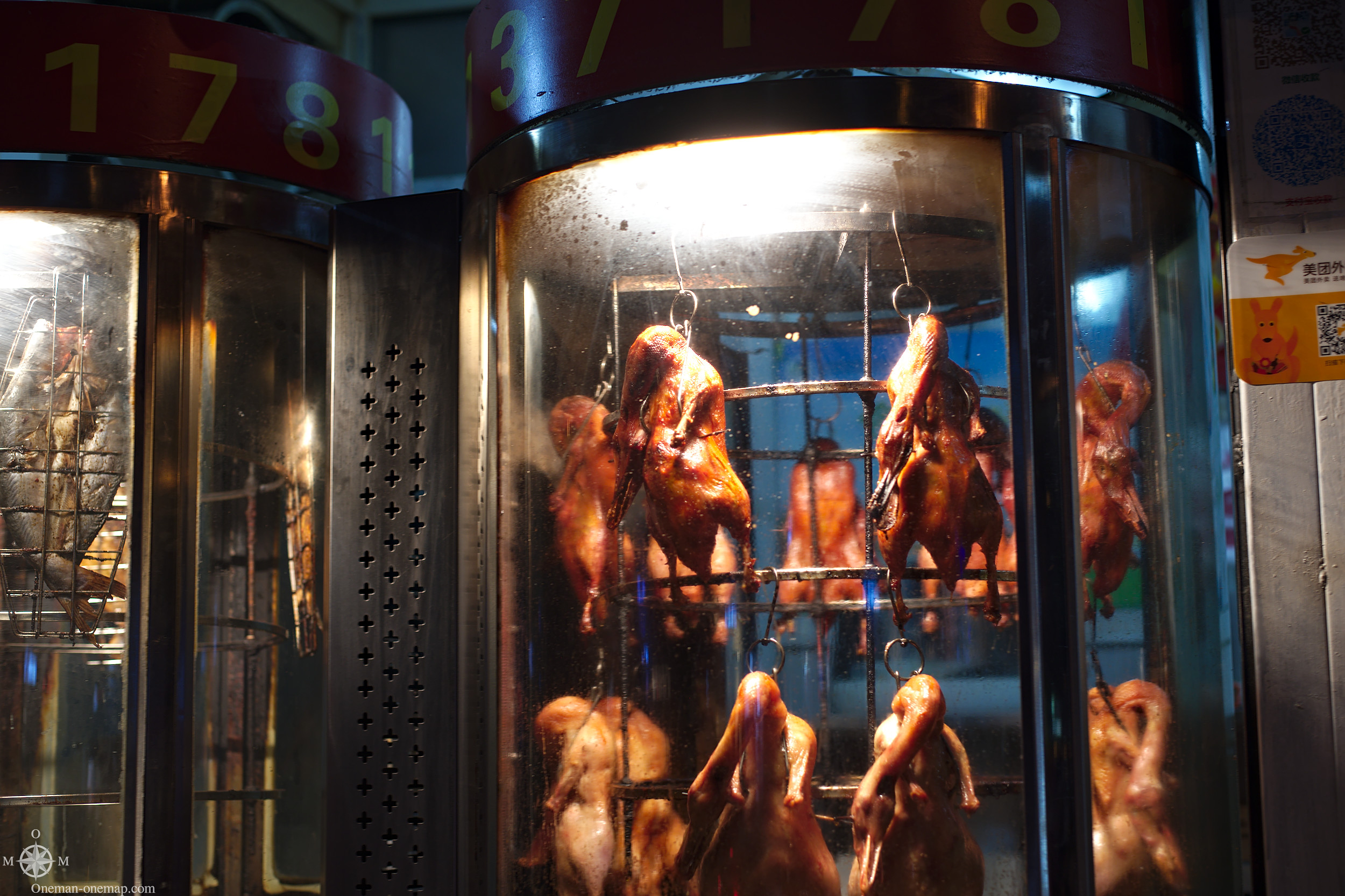

Enjoyed reading through this, very good stuff. thankyou.